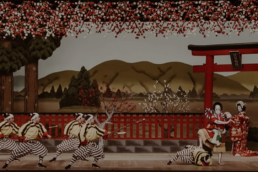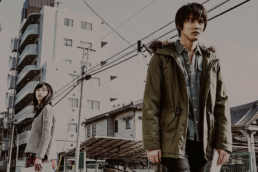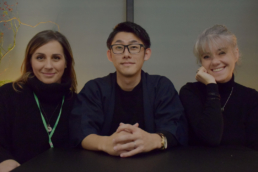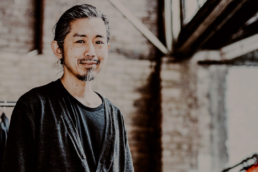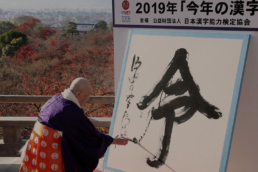Cose da fare in quarantena: guardare il teatro Kabuki
I classici del teatro Kabuki disponibili gratuitamente online
scritto da: Erika | Fonte: SoraNews24
La pandemia del coronavirus e il lockdown continuano in tutto il mondo, ma oggi condividiamo con voi i classici del teatro Kabuki disponibili online per poter passare il tempo in quarantena.
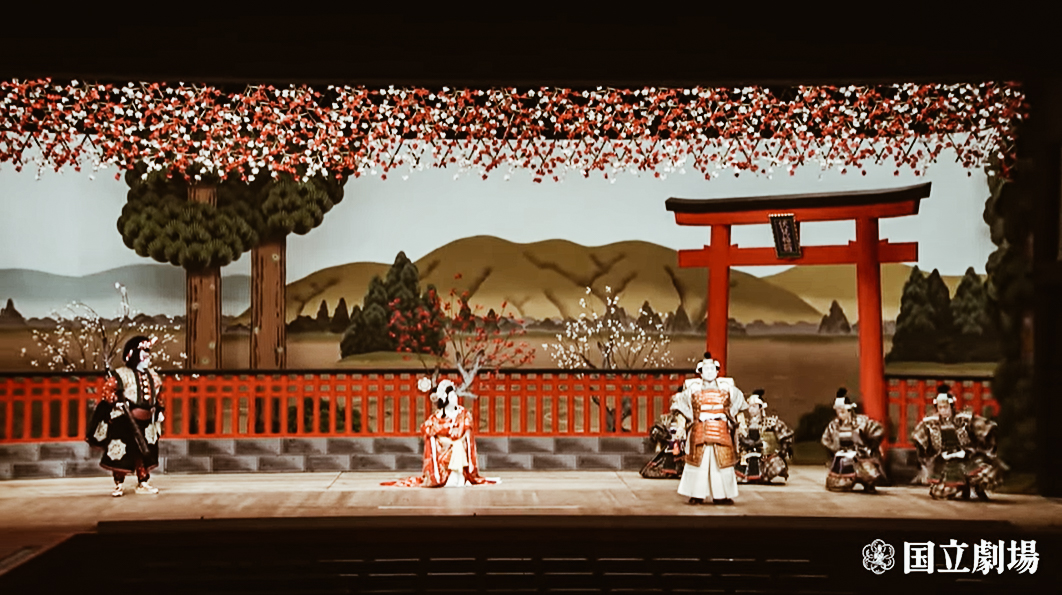
Le Origini
Per chi non sapesse di cosa stiamo parlando, con il termine kabuki (歌舞伎) si indica un tipo di rappresentazione teatrale sorta in Giappone all'inizio del XVII secolo.
Le origini di questa forma teatrale vengono fatte risalire al 1603 e fanno riferimento a danze eseguite, sulle rive del fiume Kamo a Kyōto. La parola Kabuki è formata da tre ideogrammi: 歌 ka (canto), 舞 bu (danza), 伎 ki (abilità). Gli ideogrammi scelti a formare il nome sono l'equivalente fonetico della parola kabuki, derivata dal verbo kabuku ("essere fuori dall'ordinario"). Questo stava ad indicare l'aspetto e il vestiario in voga al tempo di Toyotomi Hideyoshi e caratteristico dei cosiddetti kabukimono.
In origine, il teatro Kabuki veniva interpretato solo da donne, tuttavia, in seguito alla proibizione per motivi di morale, si passò ad una interpretazione solo maschile anche per le parti femminili. Gli attori specializzati nei ruoli femminili sono chiamati onnagata. Questa tradizione teatrale ammaliò la emergente classe borghese cittadina divenendo di coseguenza una forma popolare. La novità di queste opere consisteva nella rappresentazione di fatti, solitamente drammatici, realmente accaduti. Infatti, spesso tra l'accaduto e la rappresentazione trascorreva pochissimo tempo, costituendo un vero e proprio mezzo di comunicazione di massa.
La struttura
La struttura del Kabuki è molto diversa dallo schema del teatro occidentale e le opere non trattano mai argomenti di ordine generale, questioni esistenziali o riflessioni filosofiche. Quindi sono del tutto assenti monologhi shakespeariani o considerazioni dei protagonisti su questioni di carattere politico. Con trame e caratterizzazione dei personaggi molto fragili, le opere sono spesso confezionate a più mani.
Anche per questo tipo di forma teatrale vale il principio di non assegnare preponderanza alla comunicazione verbale, in opposizione alla cultura occidentale. Infatti, per molto tempo risultava difficile per noi occidentale riuscire a leggere le difficili e sottili situazioni. Le vicende espresse attraverso l'emotività dei singoli personaggi prevalgono sempre sulle considerazioni morali creando una forte tensione emotiva.
5 Ore di teatro Kabuki online
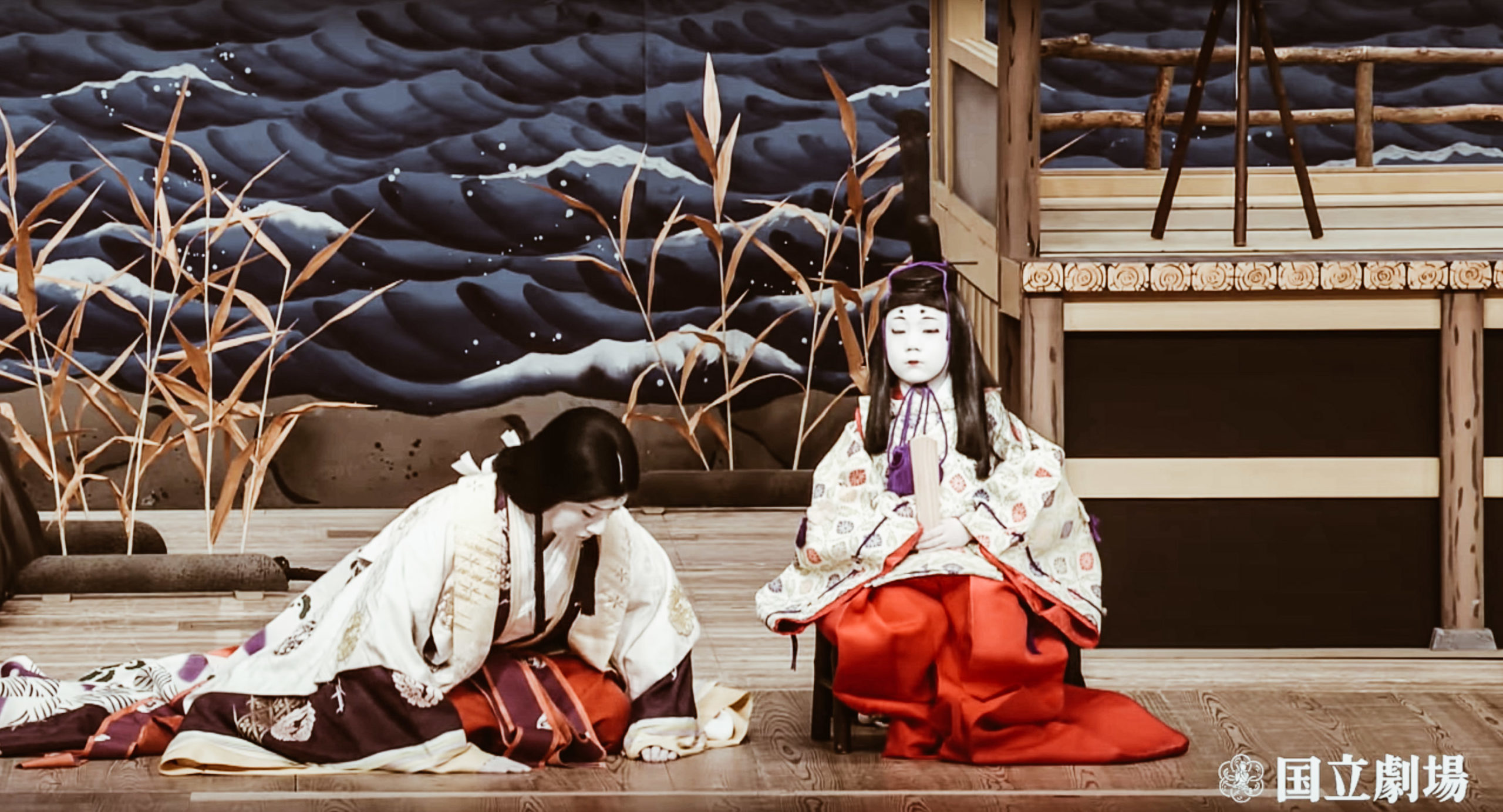
In contrapposizione al teatro Noh e Bunraku, il teatro Kabuki ha risonanza mondiale soprattutto per il tradizionale ed esagerato trucco facciale e costumi drammatici. La maggior parte di queste esibizioni si svolge in luoghi importanti, quindi per assistere ad un'opera Kabuki bisogna essere nel posto giusto, al momento giusto e una possibilità economica a vostra disposizione. Infatti, alcune esibizioni sono così di nicchia che possono solo funzionare per una ripresa, se a questo aggiungiamo la chiusura dei teatri possiamo capire come le problematiche si alzino per questo tipo di arte.
Dopo la cancellazione di Yoshitsune Senbon Zakura (Yoshitsune e i Mille Ciliegi), performance prevista per il 3 marzo, il Teatro Nazionale del Giappone ha colto l'occasione per creare qualcosa di ancora più speciale. Infatti, l'esibizione senza pubblico sarà pubblicata sul canale Youtube del teatro. Divisa in tre video, la rappresentazione teatrale è disponibile per la visualizzazione fino al 30 aprile alle 15:00 JST.
Yoshitsune Senbon Zakura
Yoshitsune Senbon Zakura è composto da cinque atti e richiederebbe due giorni per esibirsi nella sua interezza. In quanto tale, questi video ritraggono la storia in fasi separate. La Performance A copre le parti “Torii Mae”, “Tokaiya” e “Daimotsu-Ura” dell'opera, la performance B comprende le porzioni "Kokingo Uchijinishi", "Shiinoki" e "Sushiya". Invece, la Performance C gestisce il "Michiyuki Hatsune Tabi" e "Kawatsura Hogen Yakata" per un totale di cinque ore di intrattenimento.
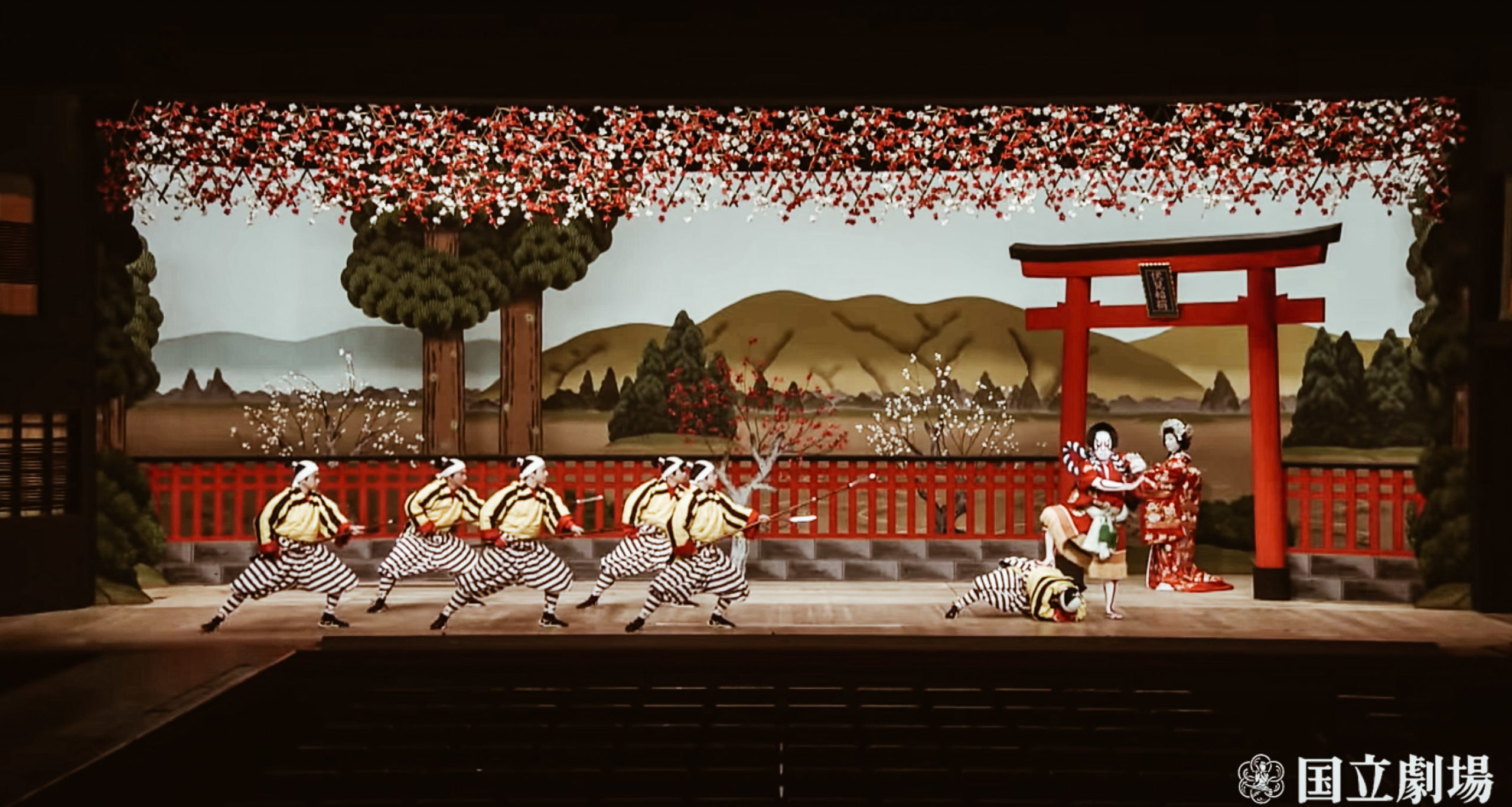
Nonostante quest'opera sia una delle epopee antiche più famose, il teatro Kabuki può anche essere godibile con limitate o assenti capacità della lingua giapponese. Infatti, costumi, le esibizioni e la musica d'atmosfera contribuiscono a fornire un ampio contesto. Inoltre, Yoshitsune Senbon Zakura è uno dei tre spettacoli di Kabuki più famosi, quindi il materiale per orientarsi lungo la storia è facilmente reperibile anche per gli stranieri.
Per vedere tutte le performance, controllate il canale YouTube del National Theatre giapponese.
Japan Italy Bridge interviews: Shito Hisayo, AAPPARÉ designer
Japan Italy Bridge interviews: Shito Hisayo, AAPPARÉ designer
Scritto da: Erika Swan, Yoshi | Traduzione: Yoshi
La nostra rubrica speciale "Japan Italy Bridge Interviews" è tornata con un'intervista con la designer Shito Hisayo che parlerà del concetto alla base del suo marchio AAPPARÉ!
Per iniziare, cos'è AAPPARÉ?
Rispondendo a ciò, AAPPARÉ è una linea che è stata progettata e concepita dall'idea, "Voglio portare l'abito nazionale del Giappone, Kimono, nella moda globale".
Introdotta come "Kimono giapponese", questa nuova moda può essere indossata in modo casual in quanto utilizza l'eleganza e la bellezza delle forme del Kimono per abbinare abiti, come abiti occidentali mantenendo la silhouette della scollatura e delle maniche di un tradizionale Kimono, con cinture a fascia, sandali di paglia e stivali.
Il tessuto utilizzato proviene da Hamamatsu City nella Prefettura di Shizuoka e cucito in Giappone, persino la maglieria utilizza materiali prodotti a Mitsuke City nella Prefettura di Niigata, assicurandosi che i capi siano realizzati in modo autentico e genuino in Giappone.
Inoltre, “Hyottoko” e “Okame”, i simboli di “un brav'uomo e una donna del Giappone tradizionale”, sono attaccati ai capi come loghi del marchio.
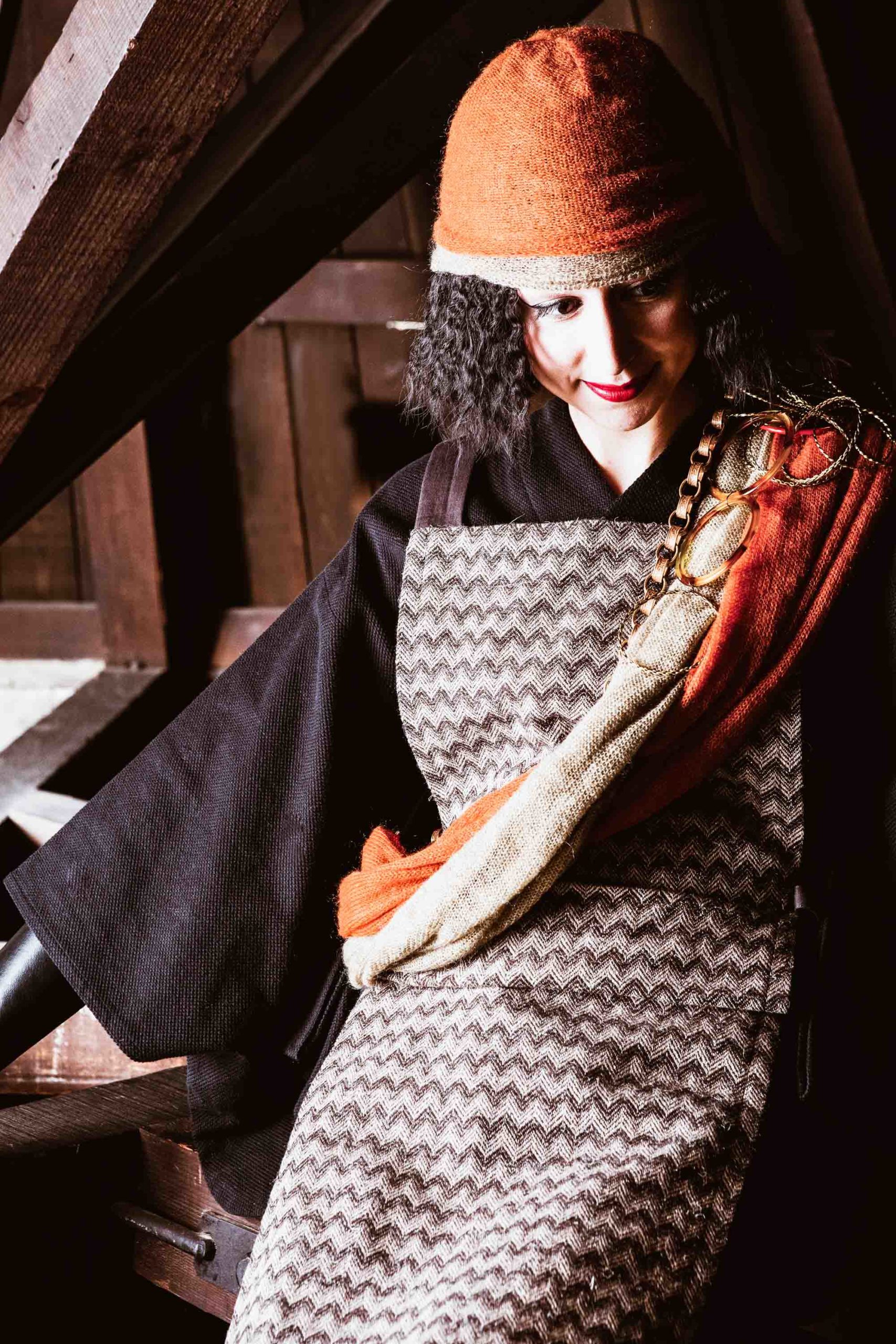
―― Per prima cosa, presentati.
Sono Shito Hisayo e sono una designer. Possiedo 8 marchi in cui vendo, realizzo e creo abiti da capo apiedi di abbigliamento occidentale, kimono e accessori che disegno.
―― Cosa ti ha portato ad avviare questa attività?
Il mio amore per la moda. Soprattutto quando si tratta di kimono.
―― A cosa presti particolare attenzione nella gestione di questo business?
Che ogni oggetto è un pezzo unico.
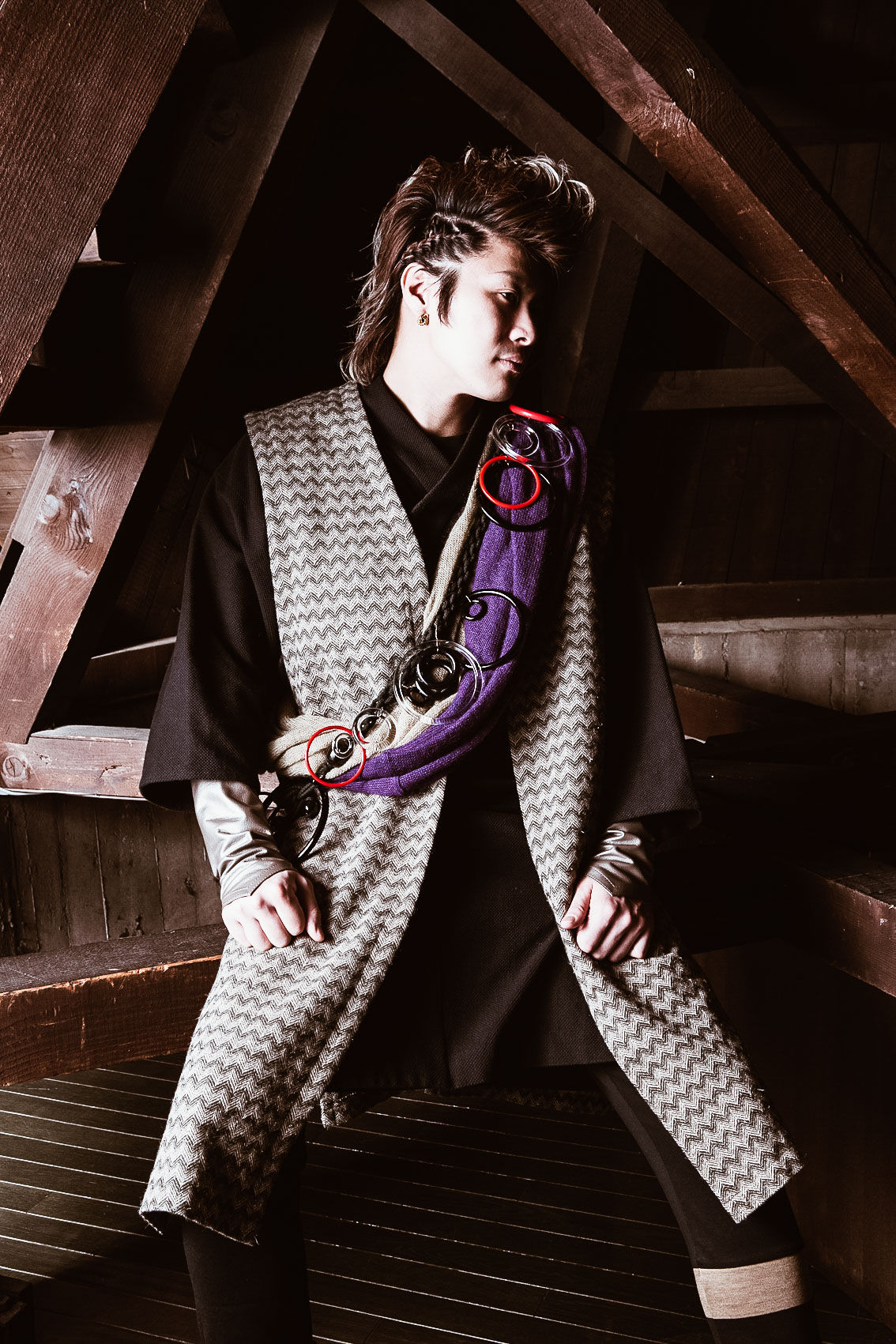

―― Cosa significa per te come donna gestire un'attività in Giappone?
Nell'industria dei kimono dominata dagli uomini, credo di poter aggiungere qualcosa di nuovo perché progetto con la prospettiva, le idee e la sensibilità di una donna.
―― Come pensi che il mercato globale percepisca AAPPARÉ?
Credo che AAPPARÉ sia visto come un'evoluzione del kimono. È moderno e facile da indossare, è quella moda che può essere facilmente apprezzata come l'abbigliamento occidentale.
―― Pensi che sia difficile far crescere una presenza globale?
Non penso che sia difficile. Credo che AAPPARÉ corrisponda alla scena dello stile di vita moderno in quanto possiede sia i design eleganti del kimono che la funzionalità dell'abbigliamento occidentale.
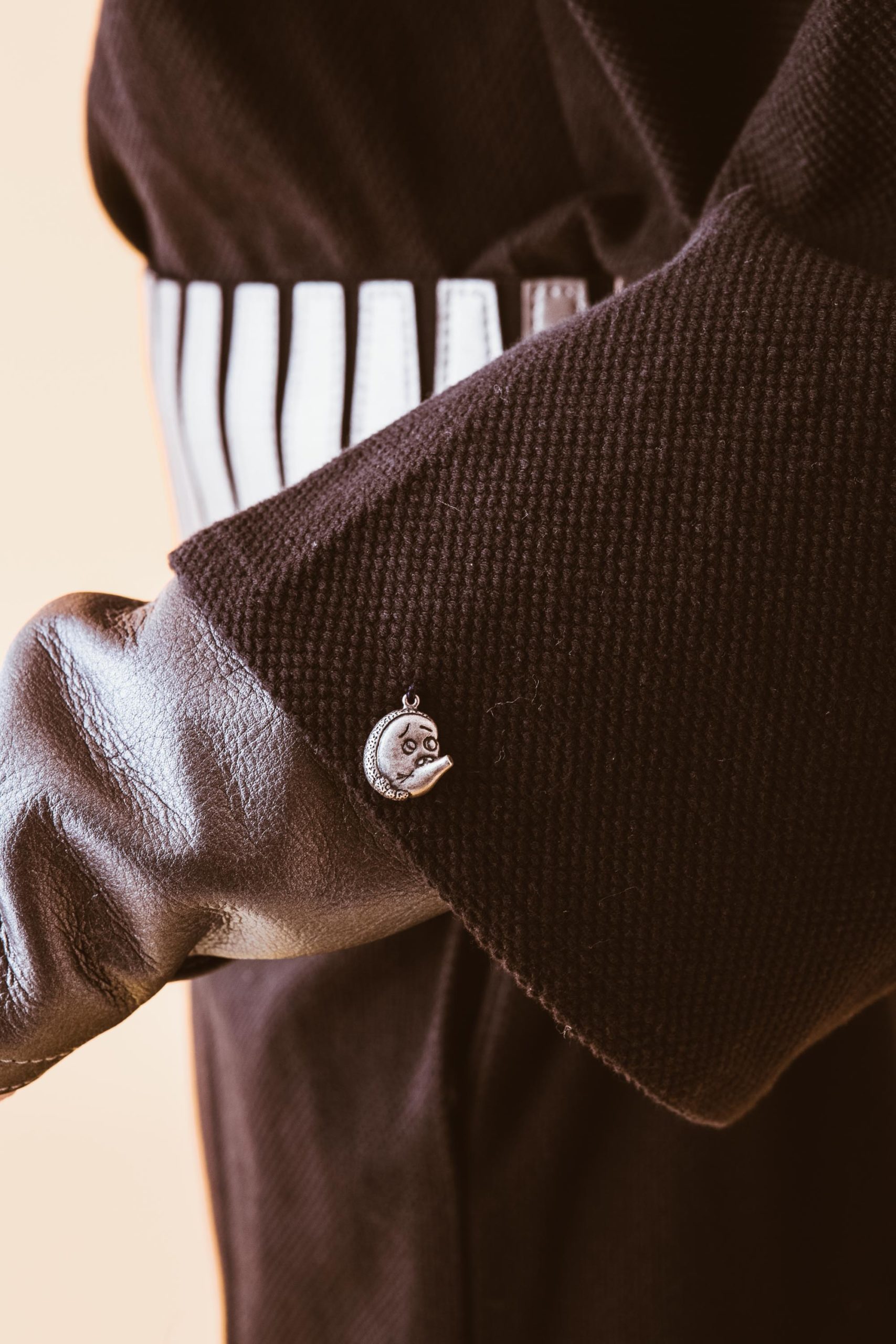
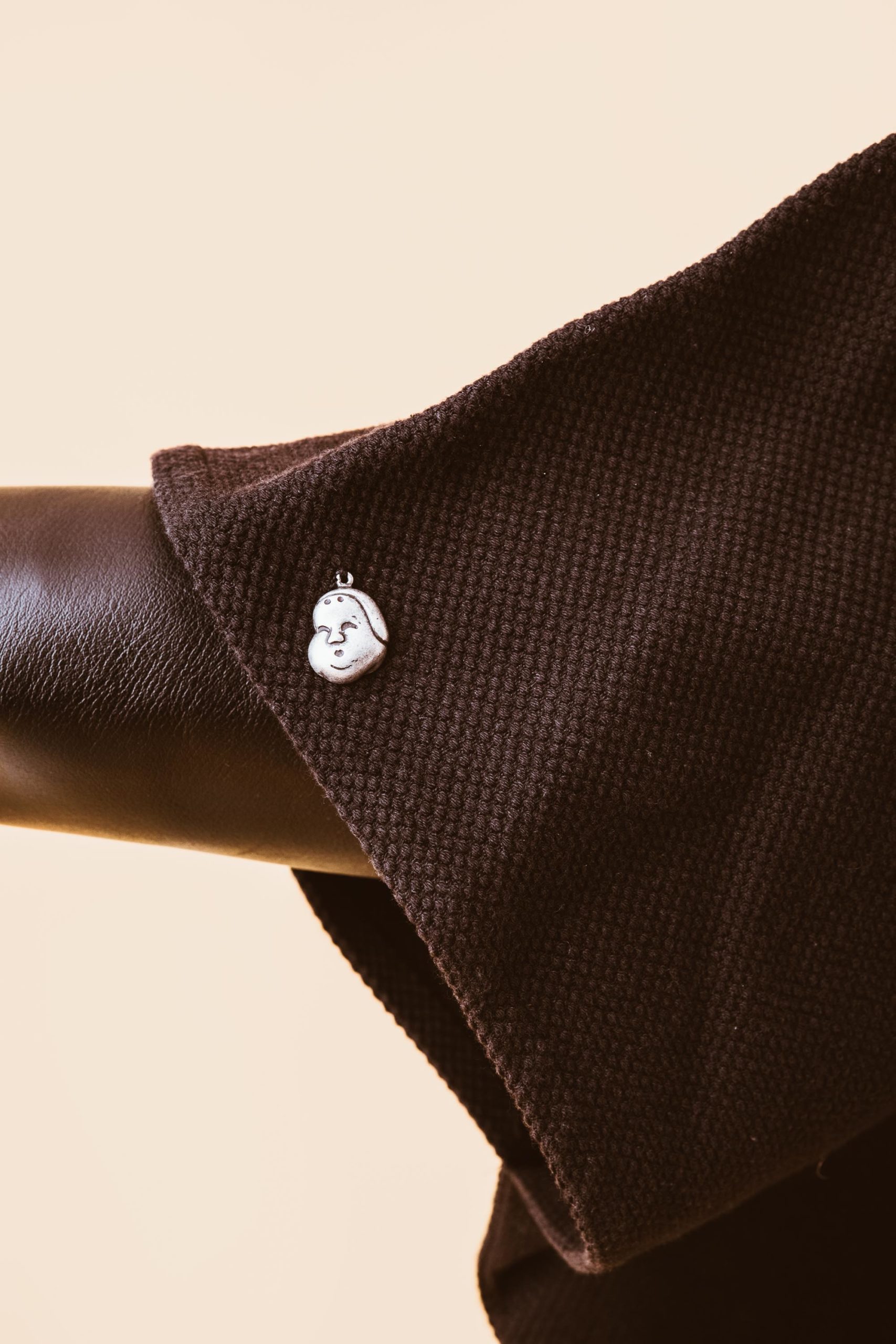
―― Cosa pensi personalmente sia la cosa che attira gli occidentali in Giappone?
Credo che sia il fascino del popolo giapponese, la loro diligenza e sottigliezza.
―― D'altra parte, cosa pensi dell'Italia?
Sento che il senso italiano è simile ai miei lavori. Credo che condividiamo parallelismi in termini di utilizzo di disegni leggermente devianti e sfumature di colore, come oro fumé, argento e bronzo.
―― Quali sono le somiglianze tra Italia e Giappone?
Il fatto che siamo entrambi in armonia con ciò che è alla moda e che ci piace la moda dal profondo del nostro cuore.
―― Come vedi il futuro del rapporto tra Giappone e Italia?
Credo che ci siano meravigliose scoperte da fare combinando la superba tecnologia di lavorazione della pelle in Italia e i colori e i design unici del Giappone.

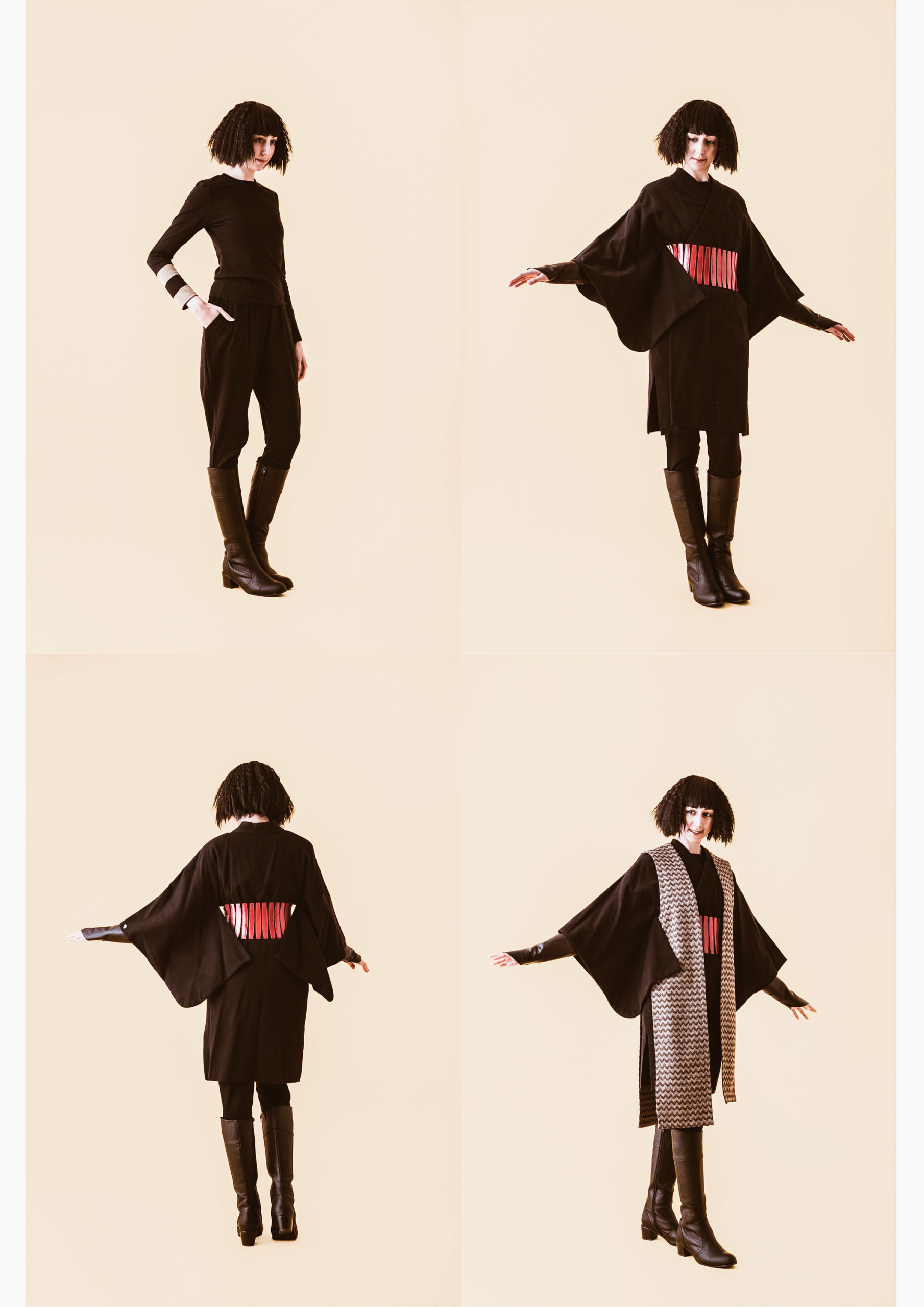
―― Tornando a 『AAPPARÉ』, quali sono i tuoi piani e obiettivi futuri?
Voglio aprire un negozio all'aeroporto dove convergono persone da tutto il mondo. Voglio anche aprire negozi in paesi di tutto il mondo. Allo stesso tempo, penso che sarà interessante se il marchio potesse fornire uniformi per ristoranti o casinò.
―― Infine, ti preghiamo di lasciare un commento per i nostri lettori.
Come giapponese che ama il Giappone, la mia speranza è di poter elevare la moda kimono giapponese nell'industria della moda globale.
Il marchio "AAPPARÉ" è stato creato con questi pensieri in mente.
Grazie per il vostro supporto presente e futuro.
Shito Hisayo
E questa è stata la nostra intervista intima con Shito Hisayo! Dopo averla letto, come vi sentite? Cosa pensate? Condividete i vostri commenti con noi sulla nostra pagina Facebook!
Per saperne di più su Shito Hisayo e sul suo marchio, date un'occhiata ai link ufficiali qui sotto!
– Links –
Website: https://shito-hisayo.jp/
Facebook: https://www.facebook.com/shito1027hisayo/
Instagram: https://www.instagram.com/shitohisayo_official/
I migliori show giapponesi su Netflix nel 2020
Non possiamo negare il fatto che Netflix sia una delle più grandi invenzioni rivoluzionarie degli ultimi anni, quindi ecco alcune delle migliori serie disponibili sulla piattaforma.
In questi giorni di reclusione forzata, la nostra relazione con Netflix, benché già molto intima, si è stretta ancora di più. Infatti, ora è il miglior momento per approfittare di tutti i nuovi show giapponesi disponibili sul sito di streaming. Se anche voi siete fan delle serie tv, potrete gustare tante nuovi episodi in lingua originale e approfittarne anche per approfondire la vostra conoscenza del giapponese.
Terrace House
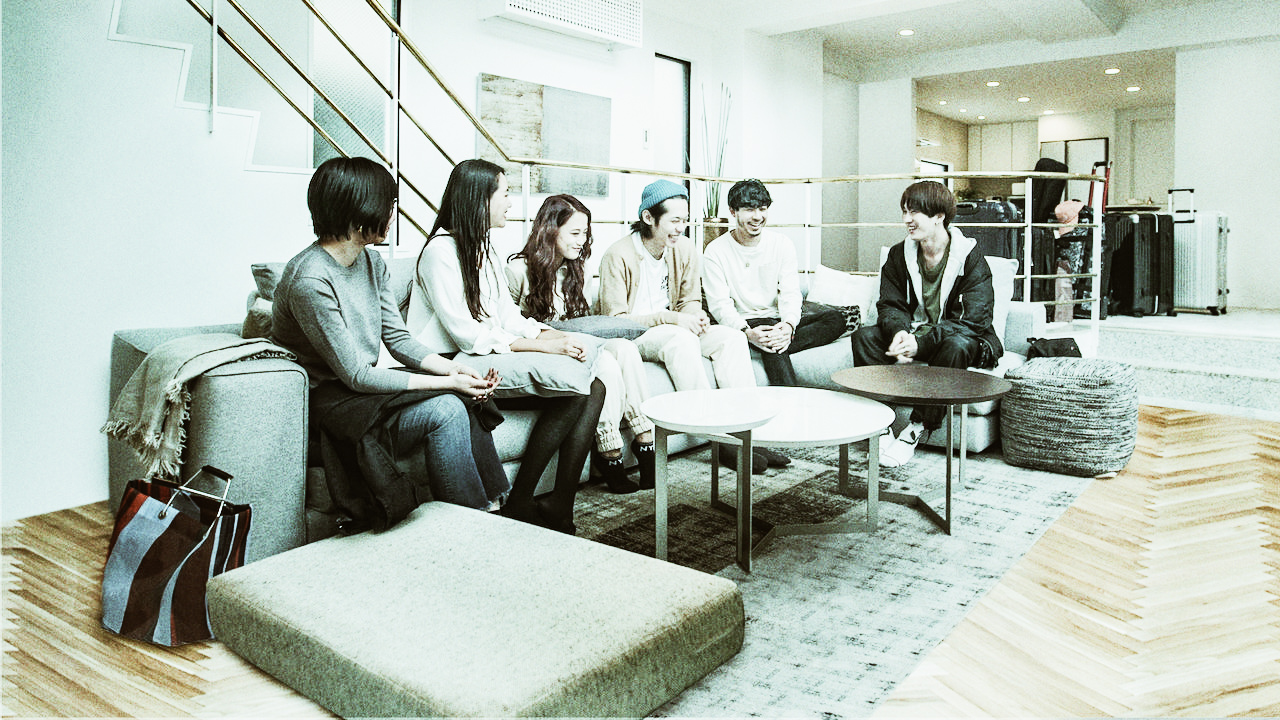
photo credits: netflix.com
Terrace House (テラスハウス) è un franchising di reality show in Giappone. La prima serie dello spettacolo era anche conosciuta come "Boys × Girls Next Door". È andato in onda sulla Cool TV di Fuji Television dal 12 ottobre 2012 al 29 settembre 2014 per otto stagioni. Dopo l'enorme successo, è stato rilasciato un film indipendente come continuazione/conclusione della serie.
A settembre 2015, Netflix ha presentato in anteprima Boys & Girls in the City come una delle sue serie originali. Il nuovo spettacolo è una coproduzione di Netflix e Fuji, trasmessa anche su Fuji Television in Giappone, cambiando anche la sua posizione in un'area nascosta nel centro di Tokyo.
Uno dei più noti show giapponesi della piattaforma, Terrace House ha i suoi ovvi pro. Siamo tutti incuriositi lle inevitabili love story che sbocciano nello show, ma è anche interessante vedere come le persone nello show lavorano per raggiungere i loro obiettivi personali. Naturalmente, insieme a questo, ci sono anche occasionali singhiozzi tra i coinquilini, che sono sempre divertenti da vedere.
Midnight Diner: Tokyo Stories
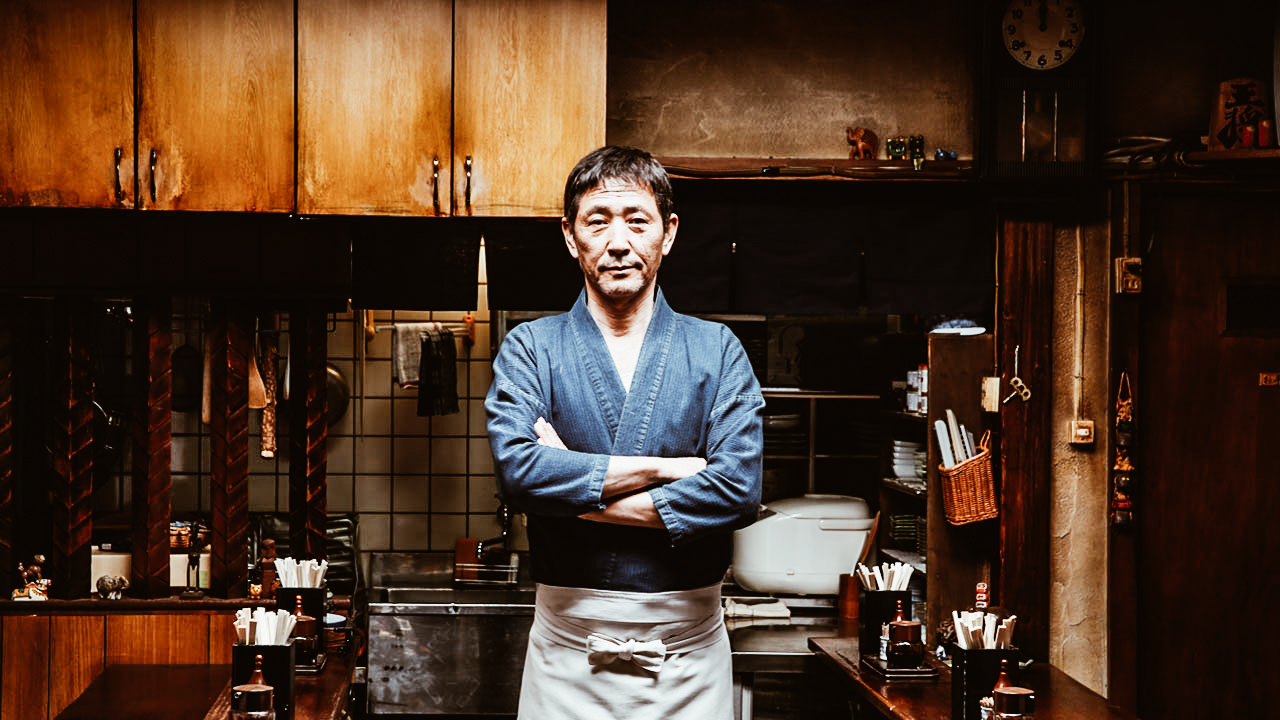
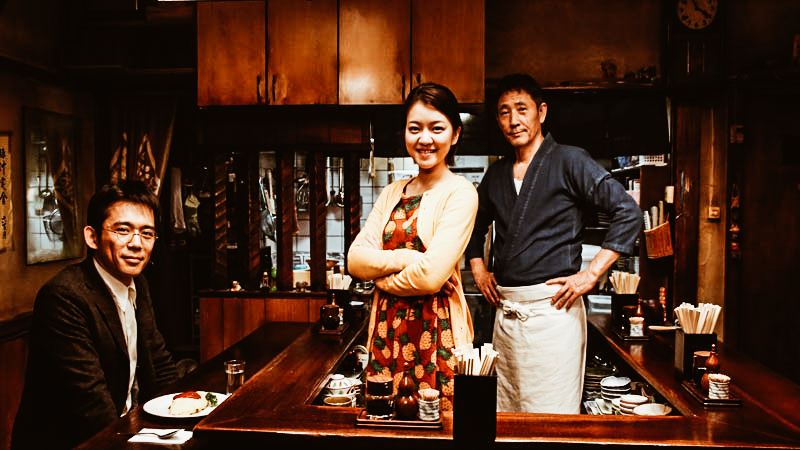

photo credits: mymovies.it
Non guardatelo se siete affamati. "Midnight Diner" presenta un uomo che è noto come "Master" e gestisce un piccolo ristorante da mezzanotte alle 7 del mattino. Il locale accoglie ogni sera una clientela mista che condivide le loro affascinanti storie personali mentre mangia deliziosi piatti casalinghi. Durante queste ore, il Master diventa un confidente per tutti.
Unendovi a questi commensali solitari al tavolo mentre parlano tra loro, vi troverete a connettervi con loro e scoprire una nuova realtà del Tokyo By Night.
Come abbiamo detto, non guardatelo questo se avete fame o inizierete a desiderare qualsiasi cosa il Master stia preparando quella notte, anche se non possiamo garantire che non accadrà comunque.
The Naked Director


photo credits: mubi.com, justwatch.com
Questo è lo spettacolo di cui tutti parlano. Ispirato alla vita del regista Toru Muranishi, lo spettacolo è una narrativa provocatoria della sua eccentrica e bizzarra carriera cinematografica per adulti. Durante l'apice del boom economico negli anni '80, Toru Muranishi, un venditore senza successo, tenta la fortuna nell'industria del porno in Giappone. Nonostante la mancanza di esperienza, Muranishi apprende rapidamente il potenziale di VHS e costruisce un impero per se stesso, rivoluzionando l'industria del porno giapponese.
La serie Comedy-drama è stata pubblicata solo ad agosto, tuttavia Netflix ha già confermato il rinnovo dello spettacolo per una seconda stagione.
Samurai Gourmet
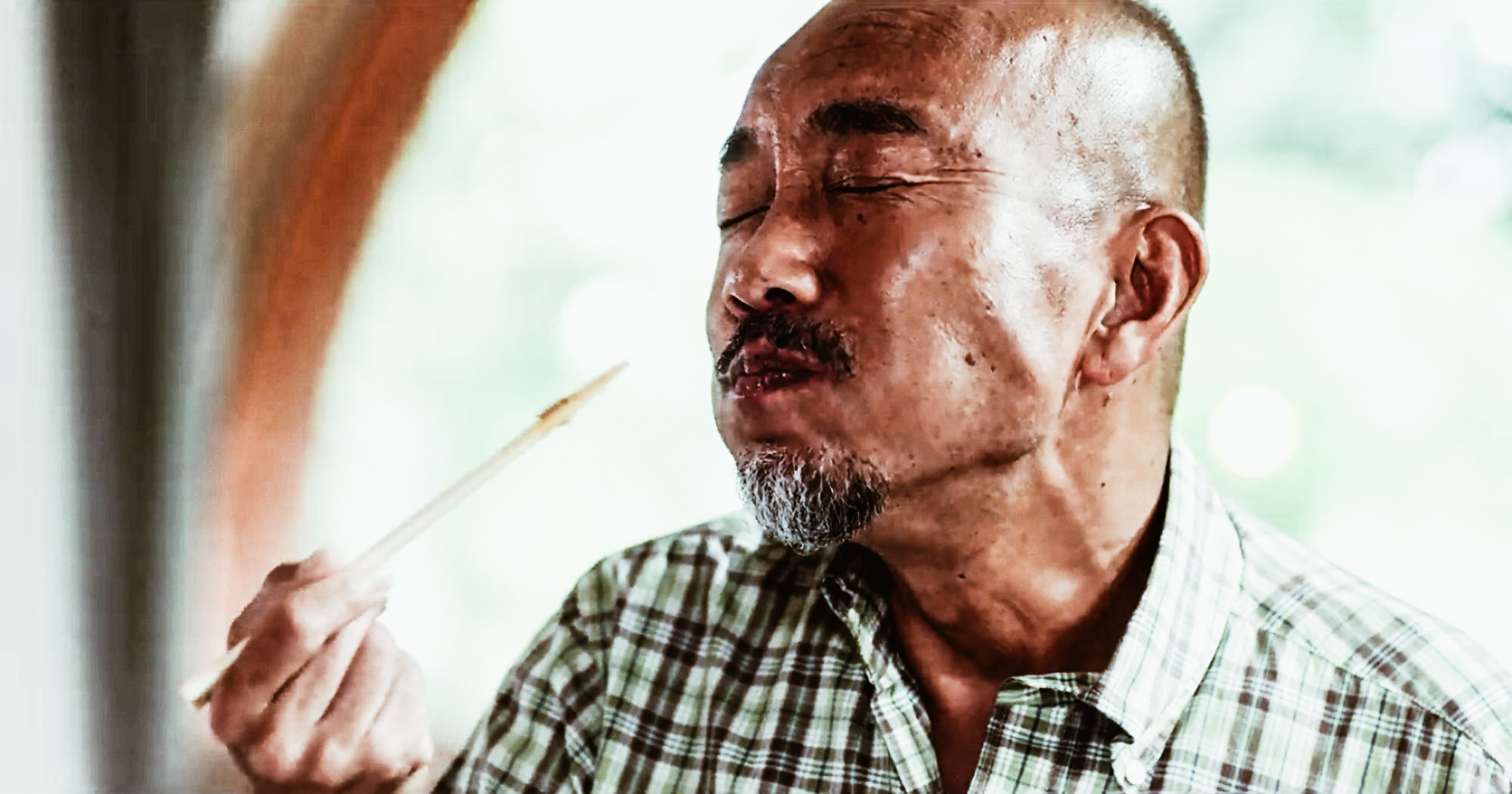
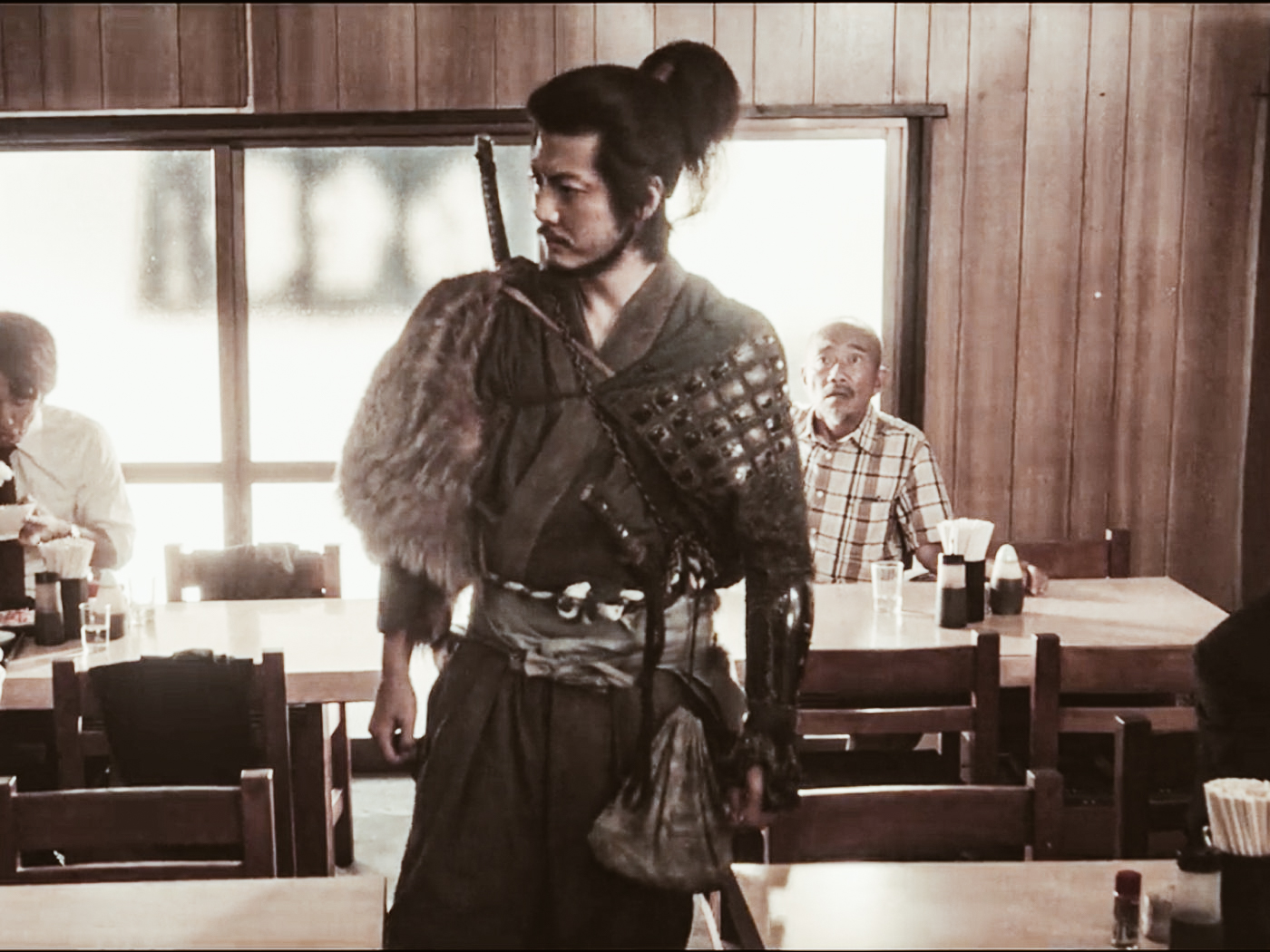
photo credits: esquire.com, eater.com
Dopo un anno da impiegato, Takeshi Kasumi fatica a trovare una nuova routine per se stesso. Mentre sua moglie continua con le sue solite attività quotidiane, Kasumi esce alla ricerca di un boccone da mangiare. Mentre è in giro, scopre il suo samurai interiore che lo incoraggia a vivere ogni giorno al massimo. Vivere anche ogni pasto al massimo aiuterà lui e noi, a godere del cibo come dovrebbe essere.
Samurai Gourmet è una serie che non solo ti aiuterà a riscoprire la bellezza di ogni pasto, ma ti condurrà anche nelle strade facendoti esplorare te stesso e una nuova città.
Queer Eye: We’re in Japan!


photo credits: netflix.com, wonderlandmagazine.com
Un reality riavviato nel 2018 e pronto a rilasciare la sua quinta stagione. Lo spettacolo ha avuto un successo travolgente e ha attirato l'attenzione di un uomo con il suo messaggio ispiratore di autostima.
Cinque esperti affrontano il Giappone per la prima volta e aiutano alcuni locali a riscoprire se stessi condividendo il loro talento e le loro capacità. Con Naomi Watanabe e Kiko Mizuhara il gruppo ha iniziato a trasformare le vite di molte persone. Questa tanto attesa mini-serie girata in Giappone mette in evidenza alcuni degli aspetti culturali più interessanti insieme ad alcuni momenti emotivi.
Atelier

photo credits: netflix.com
Se vi è piaciuto "Il diavolo veste Prada" questo è lo show che fa per voi. La nuova arrivata Mayuko Tokiya con gli occhi spalancati inizia a lavorare per una casa di design di lingerie a Ginza, il quartiere della moda di Tokyo. Anche se è al suo primo lavoro, Mayuko è determinata a trovare il suo posto e a farsi valere sotto il controllo dell'azienda e del suo fondatore, una sorta di giapponese Anna Wintour.
Questa serie di una stagione vi porterà in un viaggio ricco di eventi in cui Mayuko si fa strada in una casa di moda e in una città in rapido movimento.
Million Yen Women
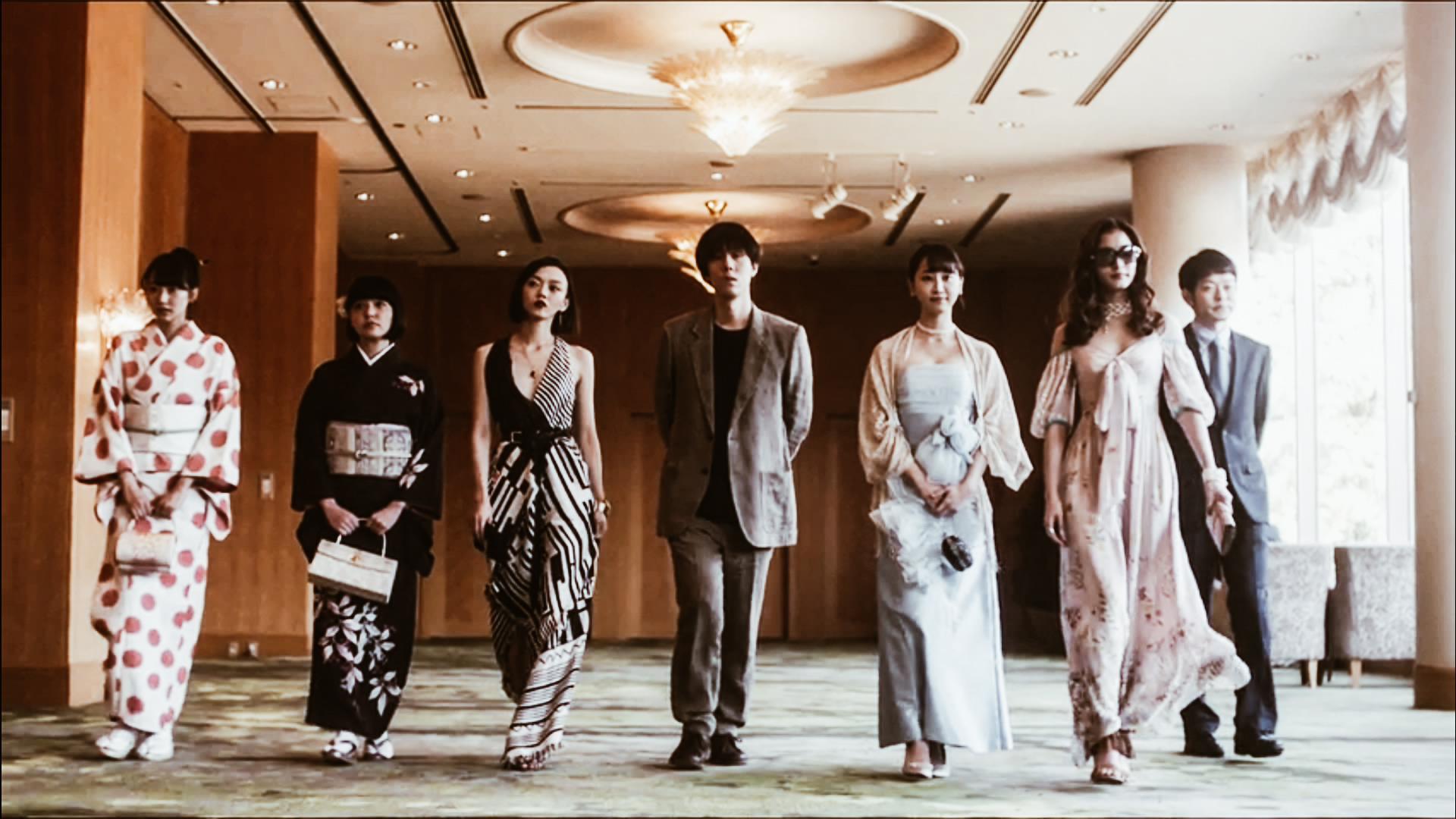
photo credits: wikipedia.org
Adattato dall'omonimo manga di Shunju Aono, cinque donne appaiono nella casa di un romanziere in difficoltà, Shin Michima. Pagandogli una somma mensile di un milione di yen, chiedono l'affitto e le spese di soggiorno in cambio. Tuttavia, Michima non sa perché queste donne siano qui e non gli lasceranno fare domande. Mentre questa potrebbe sembrare una storia di un manga per giovani uomini, ogni donna ha in realtà la sua personalità. Il loro rifiuto di fornire qualsiasi informazione crea una dinamica interessante che ti stupirà e ti farà guardare tutti gli episodi in una volta sola.
Switched
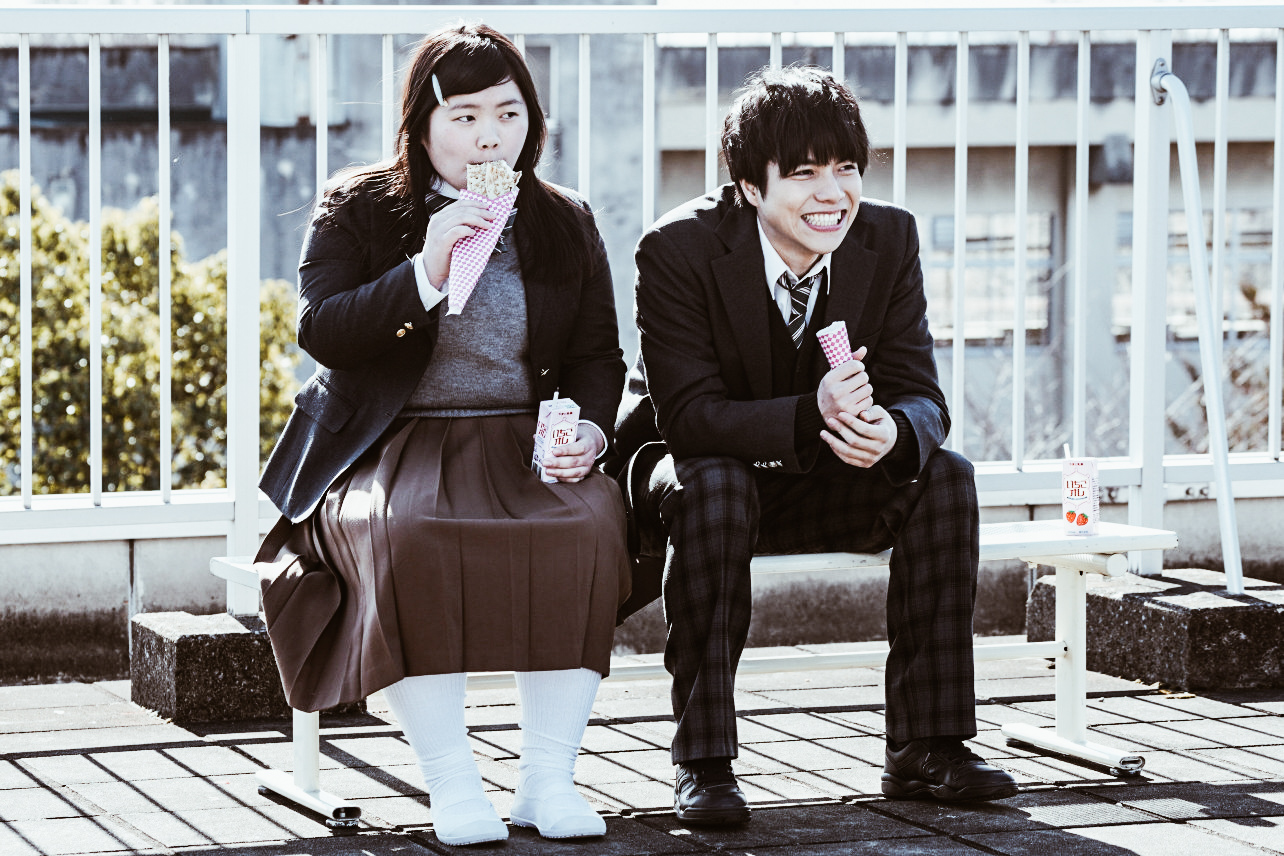
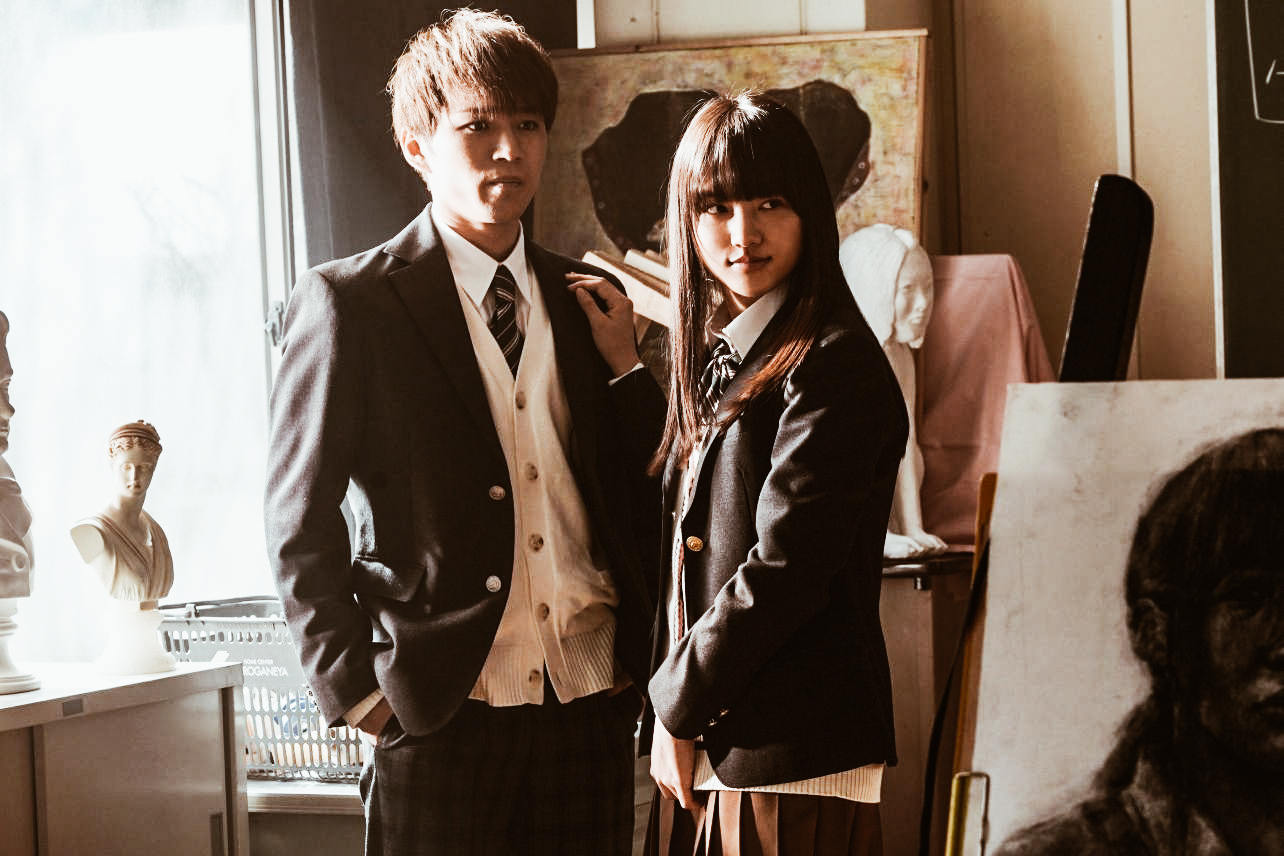
photo credits: techprincess.it, decider.com
Quando frequentavate il liceo, avete mai sognato di cambiare posto con la ragazza più popolare della scuola? Questa serie drammatica racconta la storia di una studentessa depressa Zenko Umine che si suicida mentre una compagna di studi Ayumi la vede cadere dal tetto. Dopo essere svenuta, Ayumi si sveglia e si ritrova nel corpo di Umine, mentre Umine è in quello di Ayumi. Con molti colpi di scena, diamo uno sguardo più da vicino a come gli studenti delle scuole superiori sono sotto pressione dalla società di oggi.
Good Morning Call

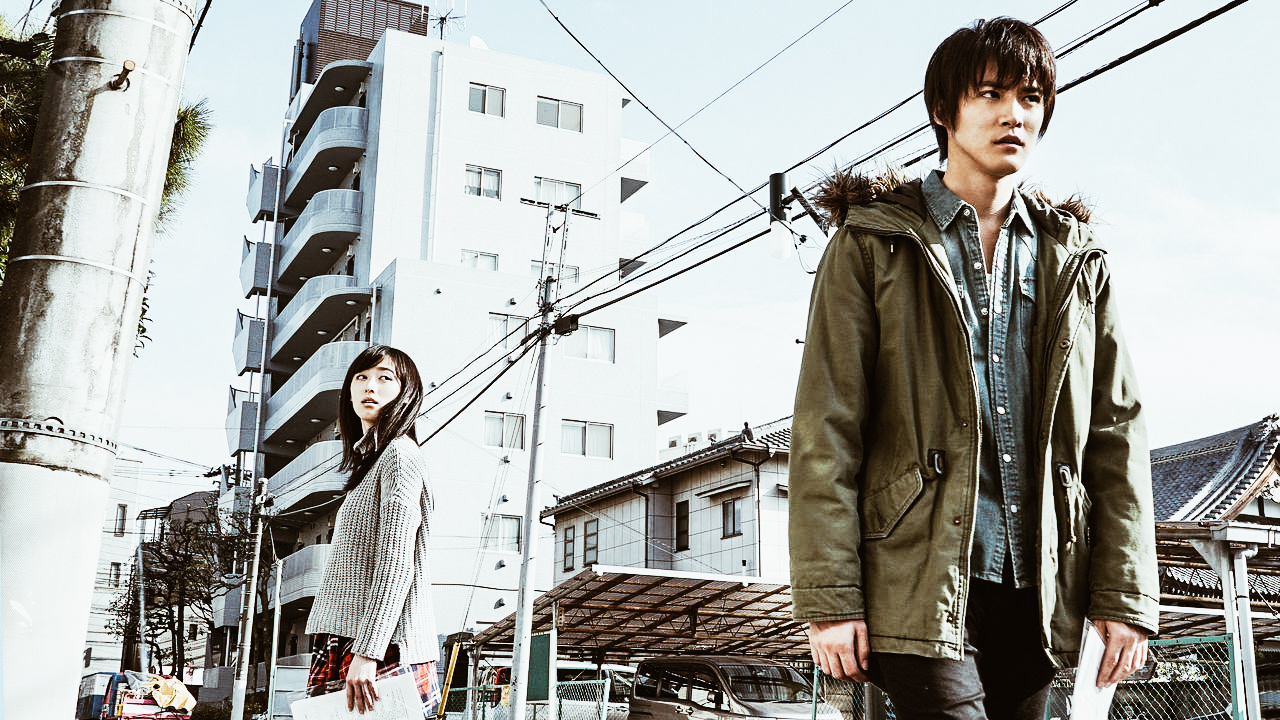
photo credits: netflix.com, geekinsider.com
Tra gli spettacoli di maggior successo su Netflix, la commedia romantica drammatica di due stagioni è un adattamento televisivo dell'omonimo manga di Yue Takasuka. Coprodotta da Fuji TV e Netflix, la storia è ambientata a Tokyo e segue il rapporto tra l'adolescente Nao Yoshikawa e Hisashi Uehara. Quando si trasferisce nel suo nuovo appartamento con 2 camere da letto, Nao scopre che anche il ragazzo più bello e popolare della scuola si sta trasferendo nella stessa casa. Rendendosi conto di essere stati truffati ad affittare lo stesso appartamento, acconsentono a diventare coinquilini in segreto in modo da poter affrontare il pagamento dell'affitto. Mentre seguirete le loro avventure, vi troverete a fare il tifo per questa coppia e ad essere stupiti da quanto le relazioni possono essere complicate a qualsiasi età.
Followers
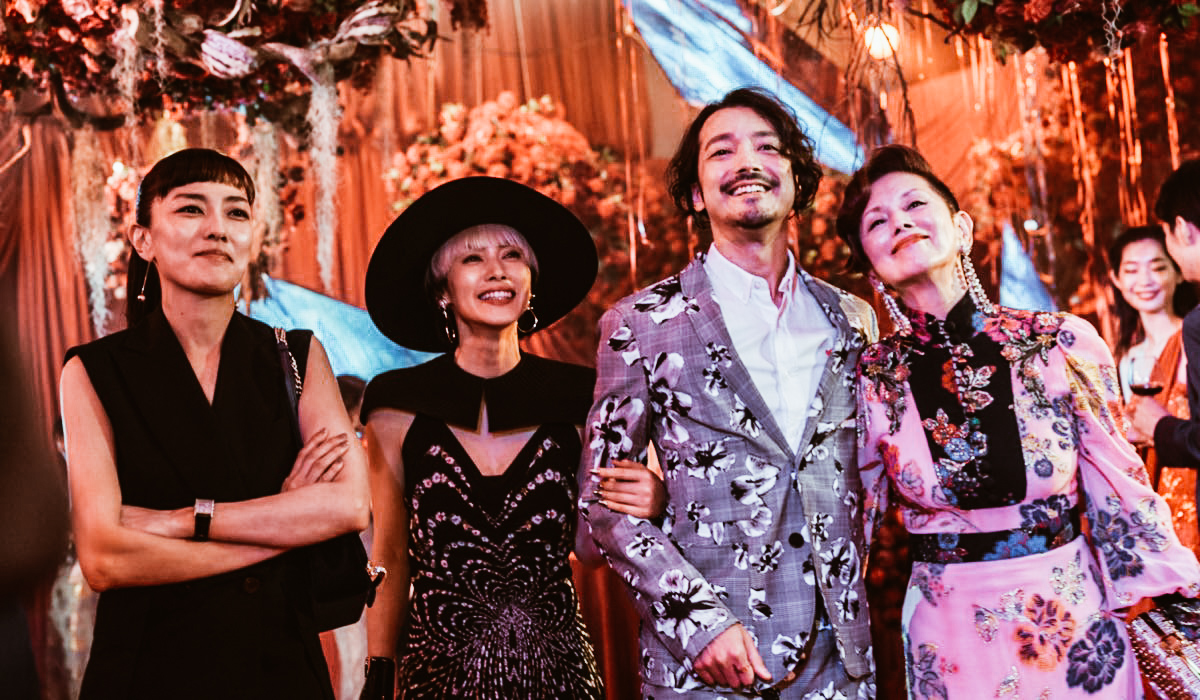
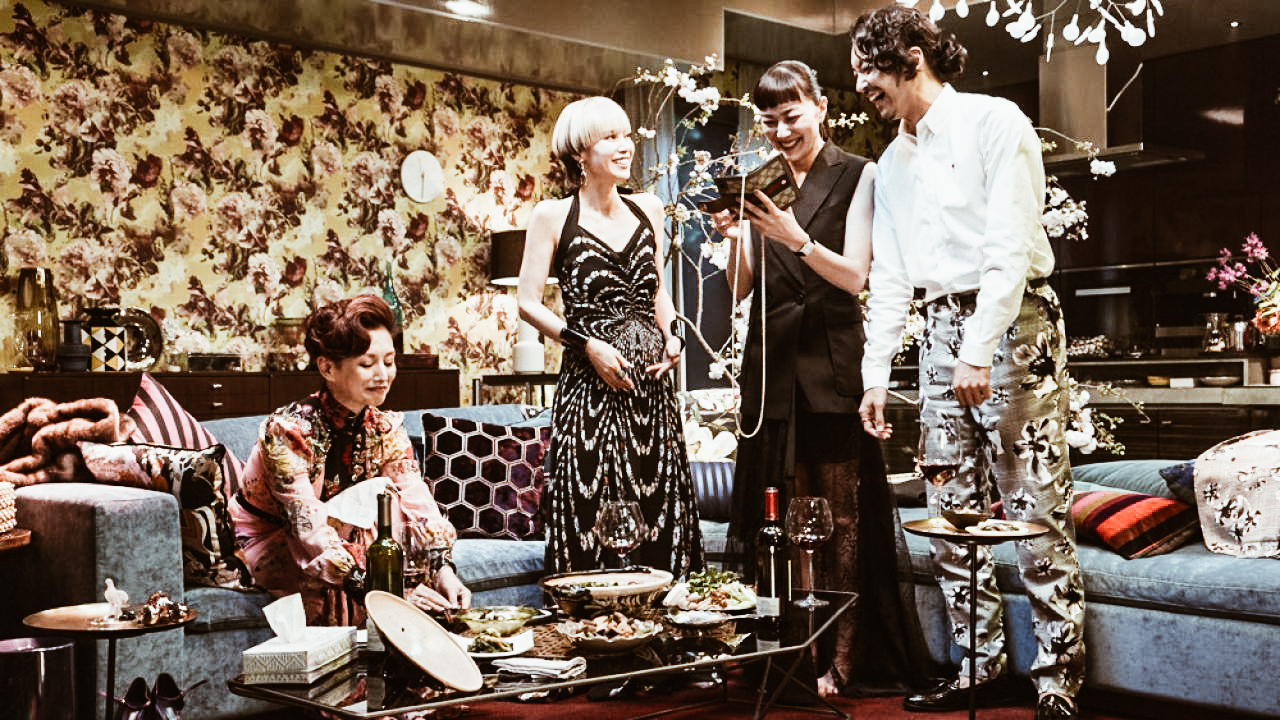
photo credits: tvserial.it, everyeye.it
Presentata su Netflix il 27 febbraio 2020, la serie ruota attorno alla città dalle luci accecanti, Tokyo. Con la sua vita, i suoi colori, la sua moda e le sue ambizioni, la città fa da sfondo alla storia di Limi Nara, una famosa fotografa di moda di successo. Ha avanzato la sua carriera con fotografie della Tokyo moderna, catturando i cambiamenti nella città e le persone che la abitano. Conducendo una vita sicura e indipendente sia privatamente che professionalmente, è in contrasto con la giovane attrice in difficoltà Natsume Hyakuta. Avendo problemi sia nella sua vita professionale che personale, Hyakuta è alla ricerca della fiducia in se stessa e della propria identità. Tutto questo cambia quando un giorno Limi pubblica una fotografia di Natsume su Instagram. Da questo momento in poi, la vita della giovane attrice e di coloro intorno a lei cambia completamente mentre queste due donne cercano di trovare la propria strada per la felicità e l'amore.
Ajin
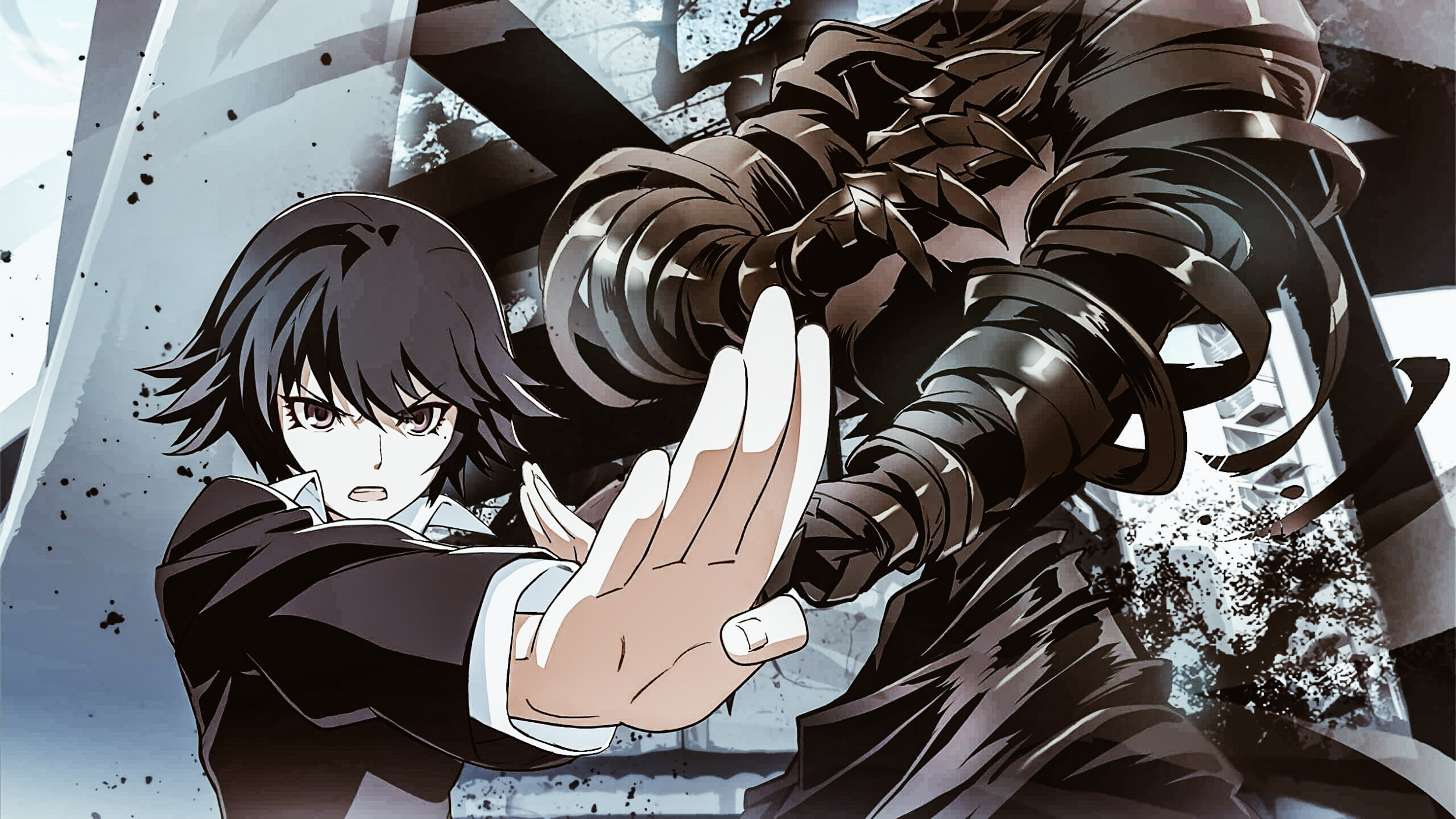
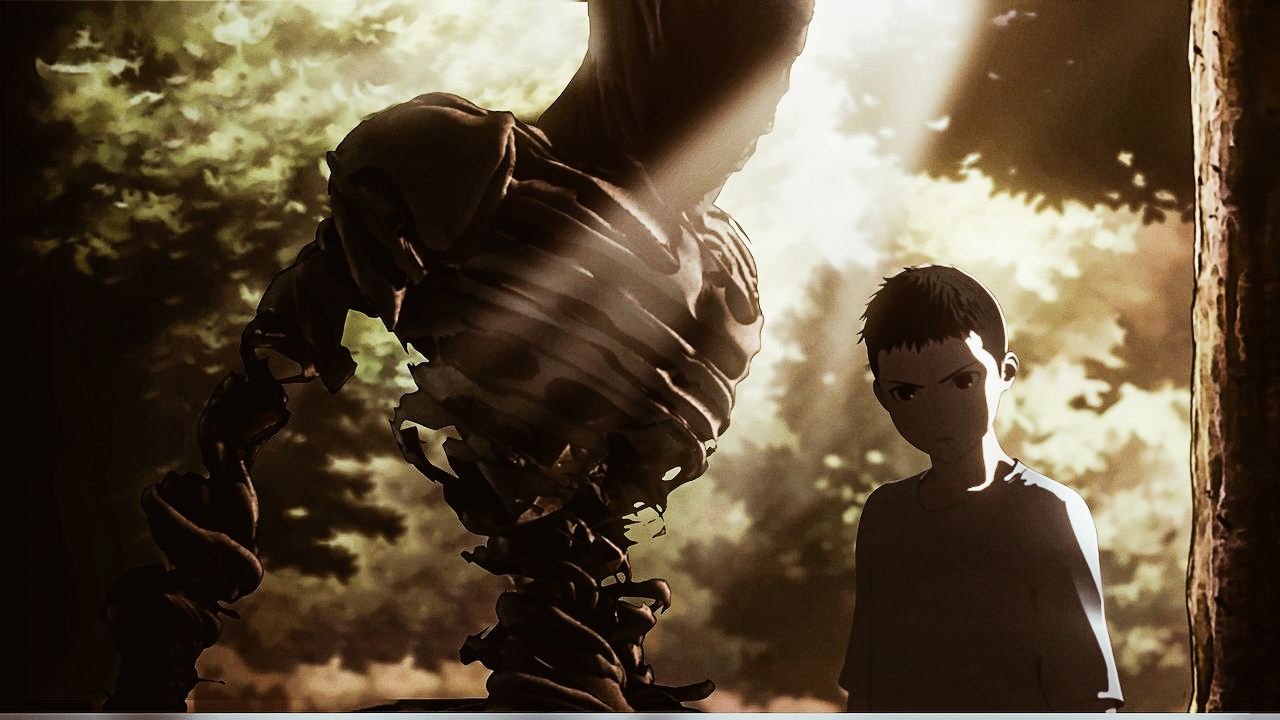
photo credits: netflix.com,pinterest.it
Kei Nagai, uno studente che scopre di essere un Ajin, un semiumano, quando viene ferito a morte in un incidente stradale. In questo mondo, un piccolo numero di umani possiede estreme capacità rigenerative che si innescano dopo la morte o lesioni mortali. Ciò consente loro di riprendersi completamente in pochi secondi dalle loro ferite, anche quelle più estreme. Insieme a questo, un Ajin può creare "fantasmi neri", entità altamente pericolose per il combattimento che sono invisibili agli umani normali. Questi fantasmi sono resistenti a qualsiasi lesione fisica, hanno una straordinaria forza, denti e artigli affilati come rasoi. I fantasmi neri hanno la loro intelligenza e, ad esempio, la maggior parte di loro fa affidamento sul proprio Ajin per le indicazioni, altri sono più indipendenti.
Ovviamente, un Ajin è considerato pericoloso e disumano dal popolo e la maggior parte viene catturata dai governi. Le nazioni usarono la scusa della protezione degli Ajin ma in realtà questi diventavano soggetti di esperimenti crudeli per sfruttare le loro capacità di guarigione. Di conseguenza, si creano due fazioni e alcuni Ajin fuggiti dai laboratori cercano vendetta. Sintonizzatevi su questa serie di fantascienza e scoprite come si svolge la storia.
Questi sono solo alcuni dei nostri programmi preferiti attualmente disponibili su Netflix. Unitevi alla conversazione sulla nostra pagina Facebook e fateci sapere qual è il vostro preferito!
Bringing Japan to Italy: episode 10 - Hoshitaro Asada
Ritorna la nostra rubrica 『Bringing Japan to Italy』con l'episodio numero 10 dedicato a Hoshitaro Asada, che lavora presso la sakagura Sogen ad Ishikawa in Giappone.
La sua missione è non solo produrre uno dei sake più buoni al mondo, ma anche quella di diffondere la cultura giapponese a livello internazionale. Ai nostri microfoni si è raccontato sulle similitudini fra Italia e Giappone e su come gli italiani vedono e vivono il mondo del sake.
Japan Meets Italy: Networking aperitivo - 1° edizione
Rieccoci con un nuovo evento organizzato Japan Italy Bridge, stiamo parlando di "Japan Meets Italy: networking aperitivo".
Come ben sapete ormai, lo scopo di Japan Italy Bridge è quello di avvicinare e promuovere le aziende giapponesi in Italia e viceversa. Tramite il digital marketing, la creazione di siti internet e la gestione di eventi, ci proponiamo di aiutare le aziende giapponesi a promuoversi sul territorio italiano ed europeo e viceversa.
Dopo aver parlato con varie aziende del territorio, abbiamo notato una mancanza di momenti per creare nuove connessioni fra le varie società. Per questo motivo abbiamo deciso di creare "Japan Meets Italy: networking aperitivo", un appuntamento ricorrente per dare la possibilità alle società nipponiche del territorio di farsi conoscere, creare nuove connessioni e passare del piacevole tempo insieme.
Il 30 gennaio 2020, abbiamo invitato 30 aziende del territorio a unirsi a noi per una serata all'insegna della condivisione. Il primo incontro tenutosi a TENOHA Milano ha riscontrato un grande successo fra i partecipati. Un momento non solo di allegria e spensieratezza, ma anche una bellissima occasione dove le aziende partecipanti hanno potuto instaurare nuove connessioni. Una serata di networking dove il Giappone ha incontrato l'Italia per rafforzare un'amicizia che dura da più di 150 anni e per far nascere collaborazioni ancora più solide fra le aziende dei due paesi.
Alcune fra le aziende partecipanti hanno condiviso aggiornamenti e presentazioni di progetti in corso per poter generare connessione fra le realtà del territorio.
Vogliamo ringraziare tutte le società e le persone che ci hanno raggiunto per celebrare questa serata. Japan Meets Italy ritornerà in primavera con una nuovissima edizione e molte altre occasioni per potersi conoscere e confrontare.
Per maggiori informazioni e per partecipare alla prossima edizione: angela@japanitalybridge.com
Fotografo: Alberto Moro
Tokyo 2020, tutto quello che c'è da sapere sulle Olimpiadi
Il nuovo anno è finalmente arrivato e mancano solo pochi mesi all’inizio delle Olimpiadi di Tokyo 2020.


Le Olimpiadi sono sempre un momento in cui tutto il mondo si riunisce. E’ il momento in cui diventiamo tutti esperti di scherma, lancio del disco e getto del peso. Alla fine tutto il mondo è paese, ma quelle di Tokyo 2020 si preannunciano essere uno spettacolo da togliere il fiato.
Tutti i dettagli su Tokyo 2020
A meno di un anno dall’apertura, cominciano ad uscire le prime news e i primi programmi ufficiali. La cerimonia di apertura si terrà il 24 luglio 2020 e quella di chiusura il 9 agosto, mentre le Paralimpici avranno luogo dal 25 agosto al 6 settembre dello stesso anno. Potete trovare un programma completo di tutte le competizioni sul sito ufficiale.
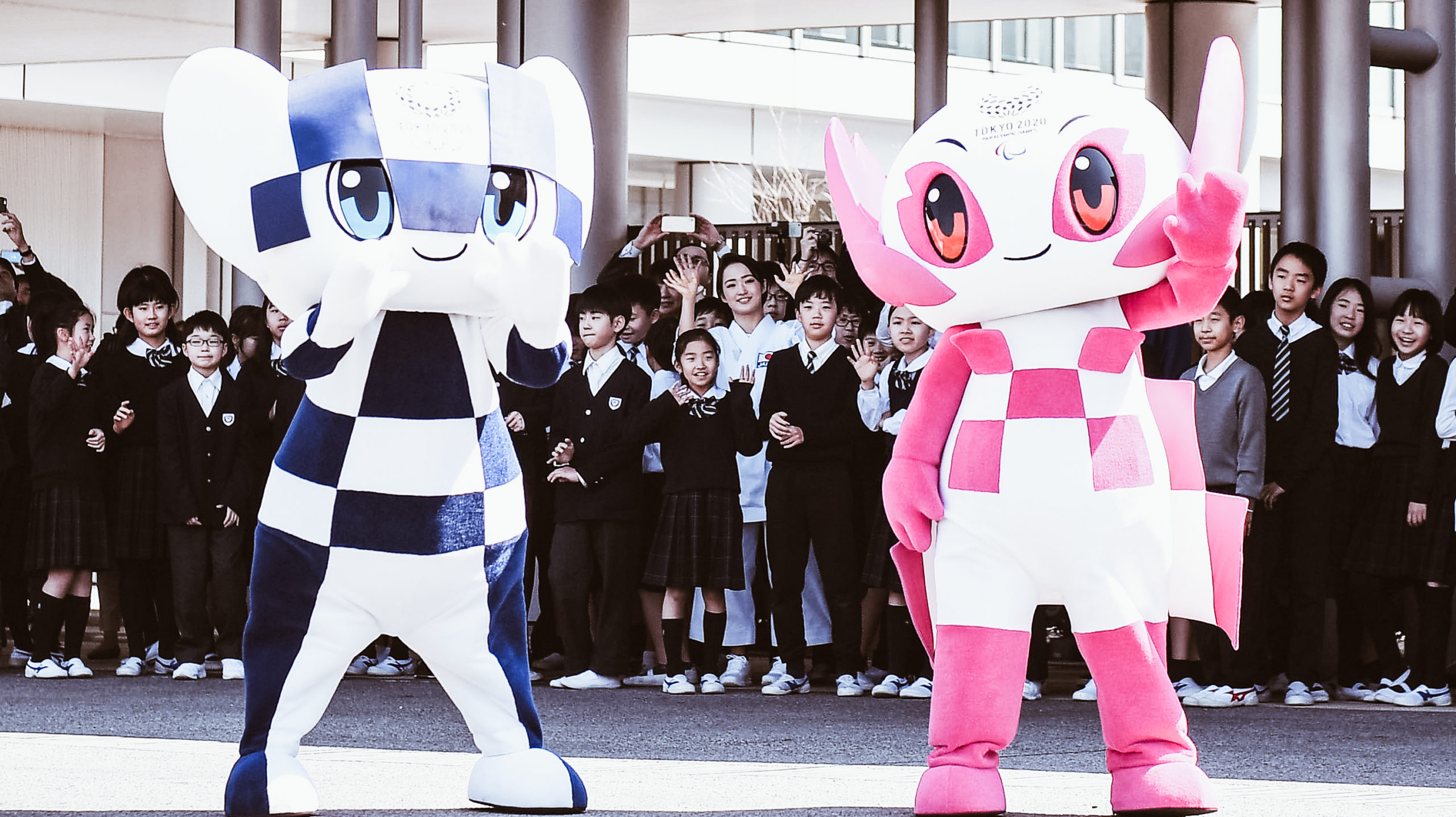

Dove si svolgeranno le Olimpiadi di Tokyo 2020
Per questa occasione, Tokyo ha preparato più di 40 luoghi e palazzetti in giro per la città. Gli ultimi giochi estivi ospitati in questa città, risalgono al 1964, le prime Olimpiadi in Asia. Tuttavia, la capitale del Sol Levante, ha ospitato per ben due volte le olimpiadi invernali, nel 1972 e 1998.


Il Logo
Nel corso della storia, il motivo a scacchi è diventato molto popolare in diversi paesi e per svariate ragioni. In Giappone, questo divenne formalmente noto come "ichimatsu moyo" nel periodo Edo (1603-1867). Questo disegno a scacchi nel tradizionale colore giapponese del blu indaco esprime una raffinata eleganza e raffinatezza che esemplifica il Giappone.
Composto da tre varietà di forme rettangolari, il design rappresenta diversi paesi, culture e modi di pensare. Incorpora il messaggio di "unità nella diversità". Esprime inoltre che i Giochi Olimpici e Paralimpici cercano di promuovere la diversità come piattaforma per connettere il mondo.


Dove trovare i biglietti per Tokyo 2020
Al momento purtroppo, e come previsto, i biglietti sono tutti sold out. Tuttavia, una nuova ondata di biglietti sarà disponibile in primavera.
Quali sono i nuovi sport
Come spesso accade ad ogni olmpiade, anche per le Olimpiadi di Tokyo 2020 ci sono nuove specialità in competizione. Nonostante mancassero all’edizione di Londra e Rio, il Baseball and Softball entrano ufficialmente in gara grazie alla forte popolarità in Giappone. Cinque nazioni gareggeranno assieme agli ospitanti per la medaglia d’oro sul diamante.


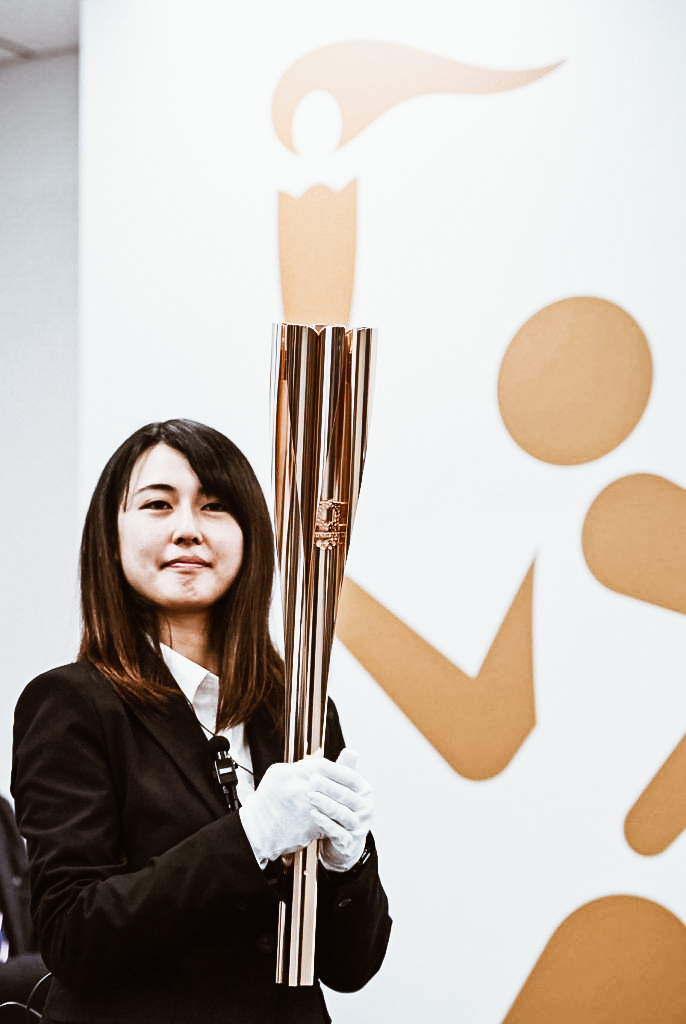
Assieme a queste arrivano anche il Karate, la scalata, surf e skateboard. Sulla stessa ondata, il basket aggiunge i tornei a tre per otto nazioni. Non mancheranno poi il Rugy a sette, una variante che coinvolge solo 7 giocatori per parte. Inoltre, ritorna il golf dopo il suo debutto a Rio.
Le medaglie
Non da trascurare sono le medaglie che gli atleti vinceranno durante questi giochi olimpici 2020 a Tokyo. Infatti, per questa occasione Tokyo ha creato un progetto speciale per rendere queste olimpiadi un po’ più “verdi”. Questo progetto speciale, il Tokyo 2020 Medal Project , avrà il compito di raccogliere più di 80,000 tonnellate di telefoni cellulari e piccoli apparecchi ellettronici da riciclare in tutto il Giappone. Questi serviranno poi a creare le meravigliose medaglie delle Olimpiadi e Paraolimpiadi 2020.
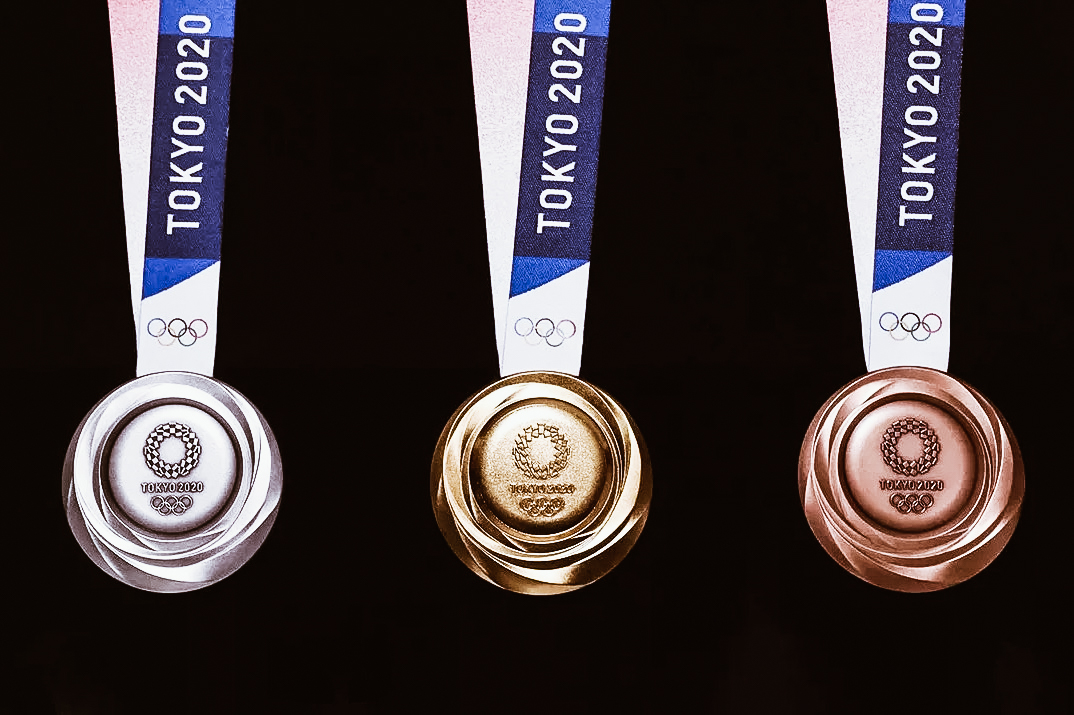

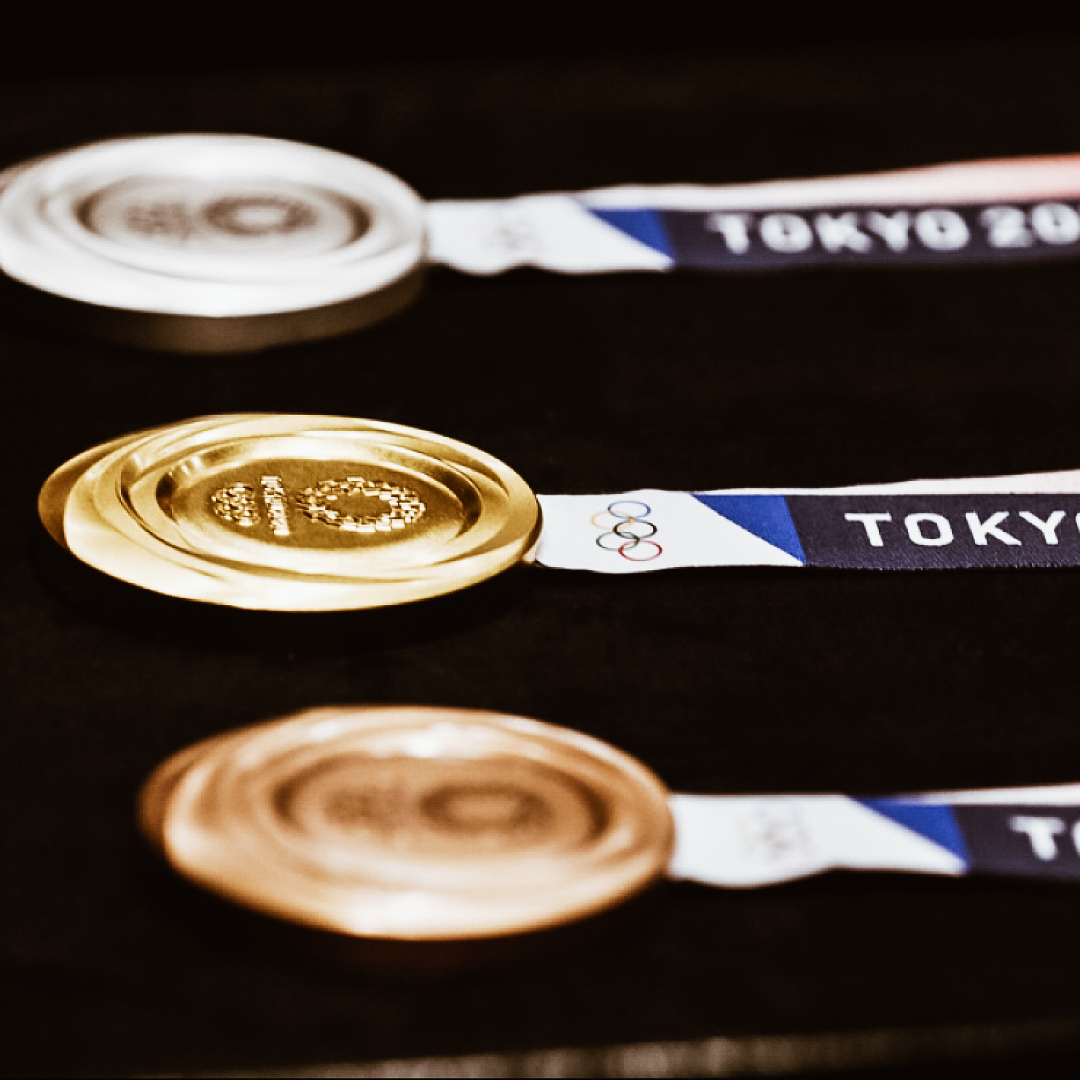

Il sito del progetto, ha affermato che sono stati usati oltre 6 millioni di telefoni cellulari derivati da una donazione nazionale durata due anni.
Sport e tecnologia insieme per le Olimpiadi Tokyo 2020
Le Olimpiadi estive del 2020 si preannunciano già spettacolari, ma le sorprese non finiscono qui. Il Giappone è famoso per essere all’avanguardia su ricerca e sviluppo in diversi campi tecnologici. Infatti, durante la cerimonia di apertura, Sky Canvas, con l’aiuto della compagnia di ricerca ALE, illuminerà il cielo notturno. Le due società lanceranno nell’atmosfera “gli ingredienti per una stella cadente” utilizzando un piccolo dispositivo satellitare.
Inoltre, sappiamo che in Giappone i fuochi d’artificio sono molto importanti e per questa occasione, la città pensa di creare una propria pioggia di meteoriti controllata.
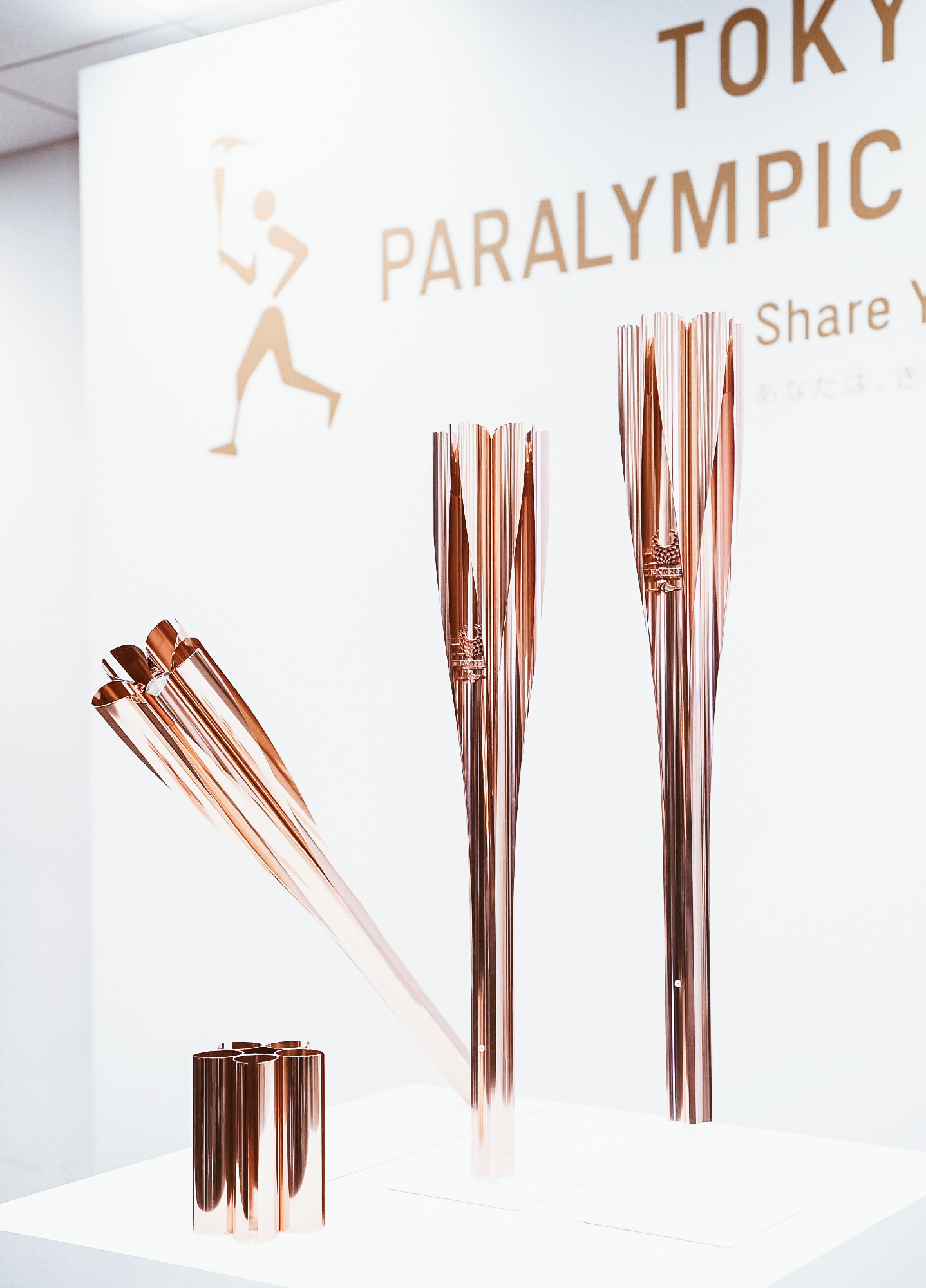
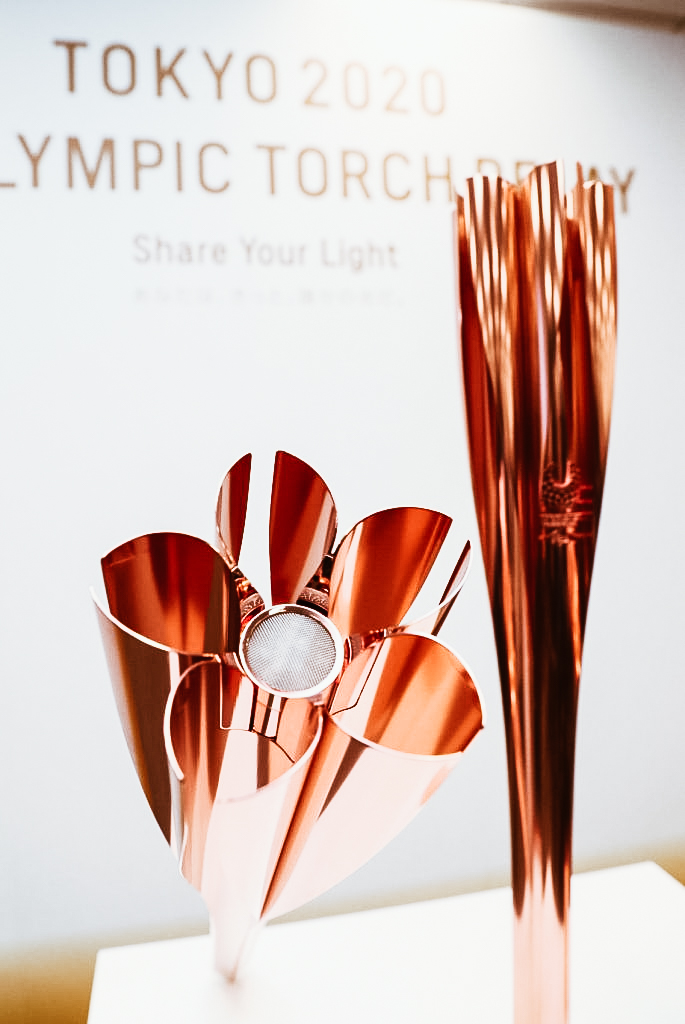
Ma le curiosità continuano. All’interno del villaggio Olimpico, saranno disponibili robot umanoidi per fornire indicazioni su alloggi e attrazioni nelle vicinanze. Tuttavia, il Giappone non si accontenta e vuole fare le cose in grande. Infatti, è in fase di sviluppo anche la tecnologia che consentirà aggiornamenti olografici di eventi all’interno dello stadio.
I trasporti di Tokyo 2020
Tokyo si sa, in quanto a trasporti è una delle città più avanzate del mondo e più connesse del mondo. Per queste Olimpiadi 2020 ci saranno delle misure speciali in atto. Infatti, per recarsi al proprio hotel, si può utilizzare una sola tessera magnetica per treni, stanza d’albergo e taxi senza conducente. Esatto, un taxi senza conducente i quali test su strada sono già in corso a Tokyo.
Ma le novità per quanto riguarda il trasporto a Tokyo 2020 non finiscono qui. Infatti, la città introdurrà nuovamente il treno più veloce al mondo. Sebbene non sarà operativo fino al 2027, il Maglev farà il suo debutto alle Olimpiadi di Tokyo. Questo treno ha infranto tutti i record di velocità terrestre ed è in grado di raggiungere velocità circa 600 km/h.
Questi treni futuristici operano grazie al principio della levitazione magnetica, consentendo ai treni di restare sospesi sui binari. È l’assenza di frizione che consente ai treni di raggiungere tali velocità, pur continuando a rispettare i rigorosi standard di sicurezza giapponesi. Insomma, un assaggio di quel futuro fantascientifico che fino ad ora abbiamo visto solo nei film.
Shinkansen N700s Supreme
Durante le Olimpiadi di Tokyo 2020 debutterà anche la nuova seria di Shinkansen N700S, detta anche Shinkansen Supreme.
Completamente ridisegnato in modalità più intelligente e silenziosa, questo treno funzionerà sulla linea Tokaido Shinkansen. Essendo più leggero di 11 tonnellate rispetto alla generazione precedenti consumerà meno energia e correrà tra le stazioni di Tokyo e quella di Shin-Osaka.
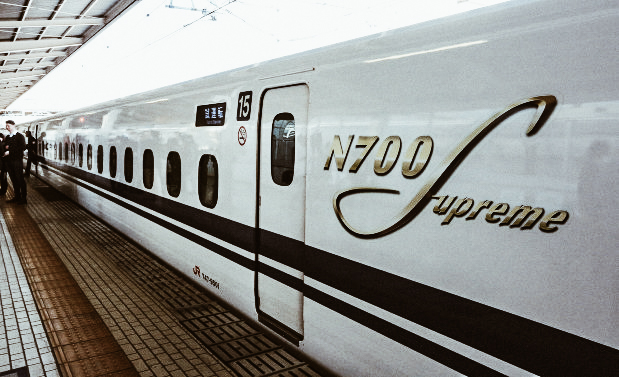

La nuova stazione della linea Yamanote
In onore di questo evento, la linea Yamanote inaugurerà anche una nuova stazione: Takanawa Gateway Station. Situata fra le stazioni di Shinagawa e Tamachi, la nuova offrirà l’accesso all’Haneda Airport Monorail e alla linea JR Keihin-Tohoku. Progettata nello stile eki naka, la stazione Takagawa Gateway sorgerà su 4 piani con un’area pubblica che ospiterà un grande scermpo per la visione dei Giochi Olimpici 2020.


Noi stiamo aspettando con ansia queste Olimpiadi di Tokyo 2020, e voi?
Fonti: olympic.org, mainichi.jp, kyodonews.net, timelapsetokyo.com, japan-forward.com
Akira Isogawa: leggenda giapponese in Australia
Il Giappone è famoso e attraente non solo per gli occhi dell'Italia ma anche in tutto il mondo e il lavoro di Akira Isogawa ne è un esempio. Con l'apertura del Giappone al mondo, i giapponesi hanno viaggiato e si sono trasferiti in diversi paesi. Akira Isogawa è ora il residente giapponese più famoso dell'Australia.

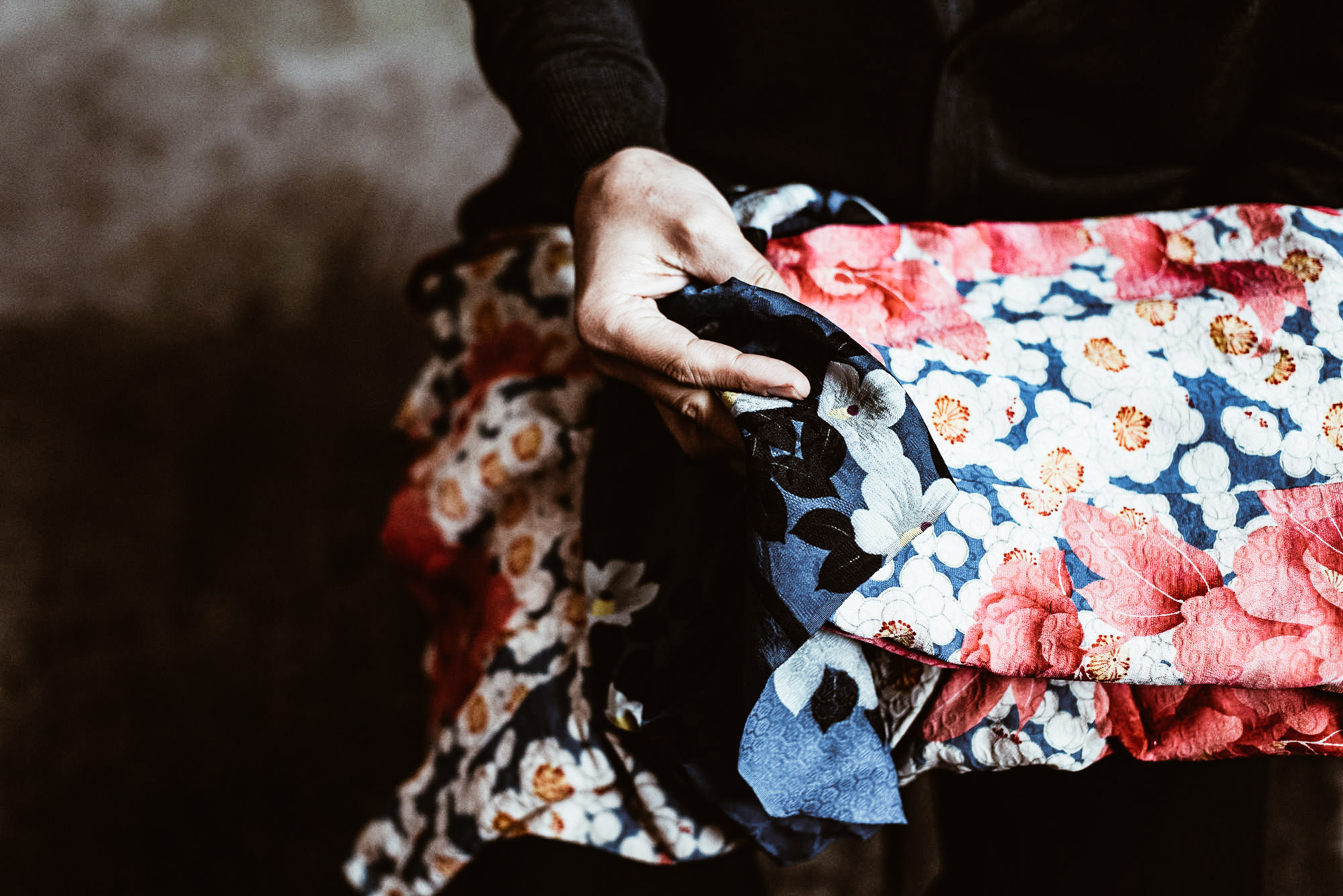
Chi è Akira Isogawa
Nato a Kyoto, in Giappone, nel 1964, è emigrato in Australia nel 1986 ed è oggi uno dei più famosi stilisti di questa terra. Ha studiato moda all'East Sydney Technical College traendo ispirazione dal design giapponese contemporaneo. Alla fine degli anni '90, era conosciuto a livello internazionale insieme al suo marchio di abbigliamento femminile Akira. I suoi abiti appaiono sotto la sua etichetta Akira e sono venduti in Australia, Nuova Zelanda e altri 10 paesi. Ad oggi, è uno dei pochi designer australiani che espone e vende i suoi abiti a Parigi.
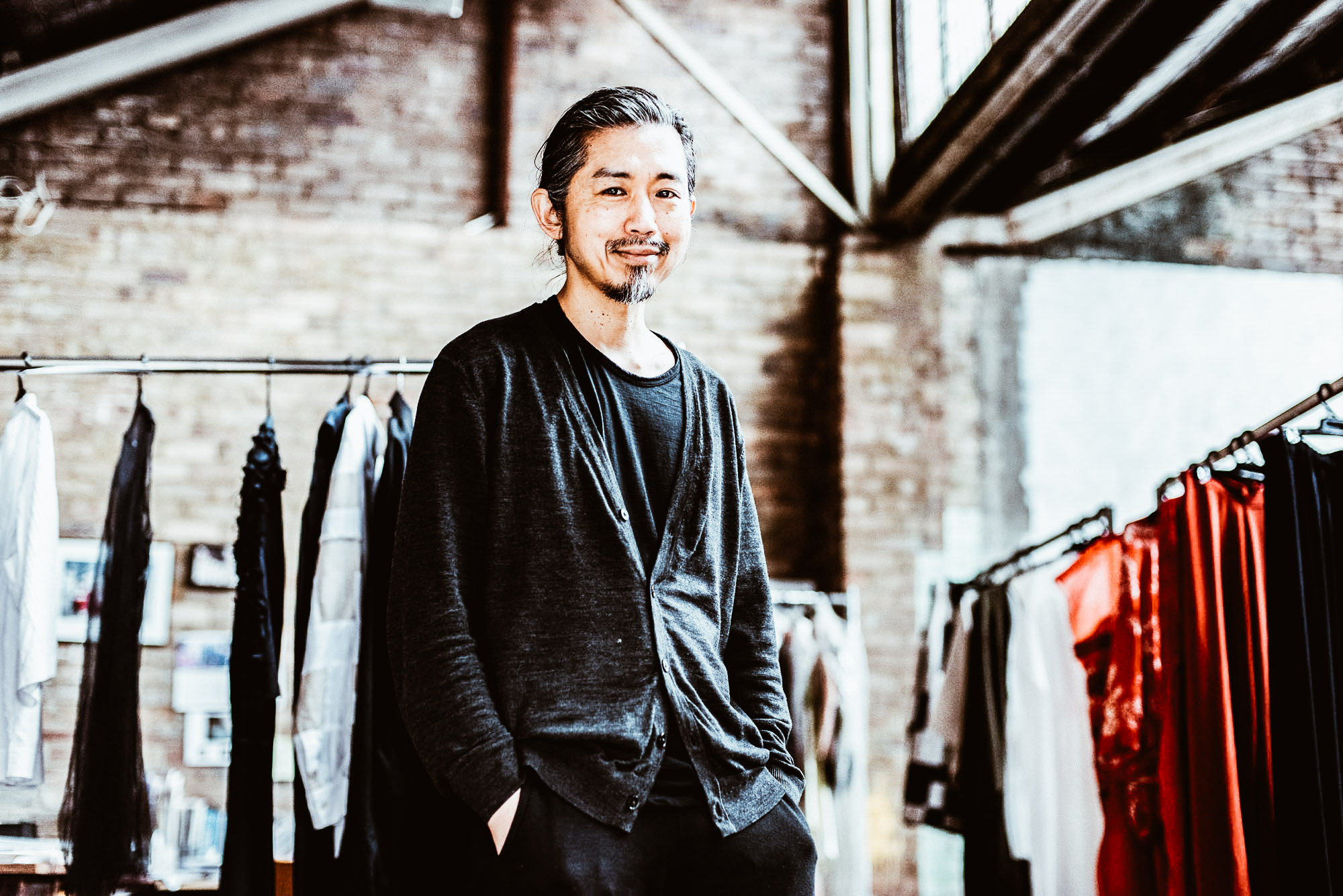
La leggenda Australiana
Nel 2005, colto di sorpresa, divenne una "leggenda australiana" e fu invitato ad apparire su un francobollo commemorativo. Questo onore è solo uno dei tanti riconoscimenti ricevuti da Isogawa per i suoi successi in oltre 25 anni di carriera
Ha detto a The Japan times "A dire il vero, non avevo idea che l'Australia Post fosse così progressista e innovativo nel proprio marketing", dice ridendo. “Pensavo che dovessi essere morto per apparire su un francobollo, figuriamoci lavorando attivamente nel proprio campo. Ho ancora molto da fare!”
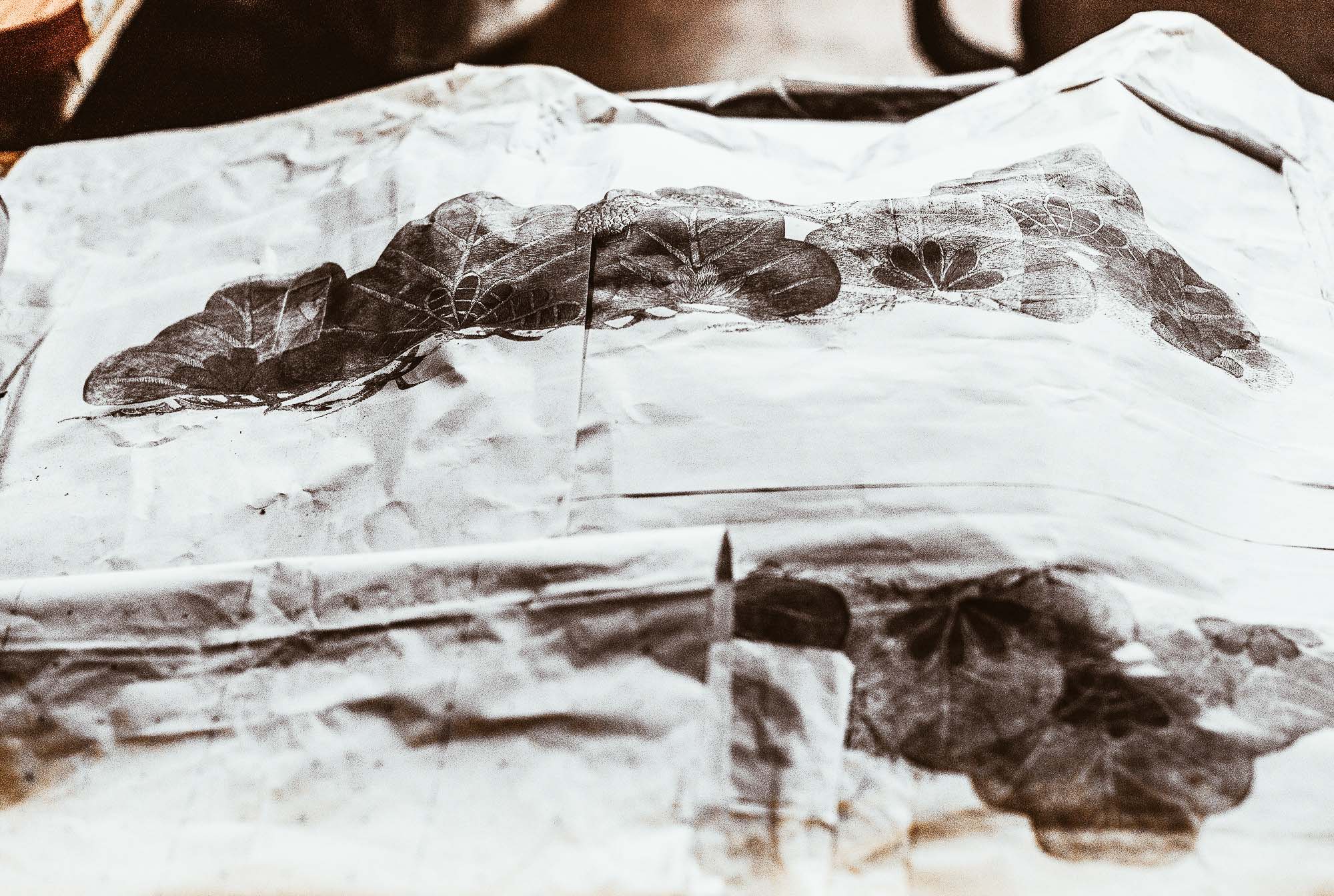
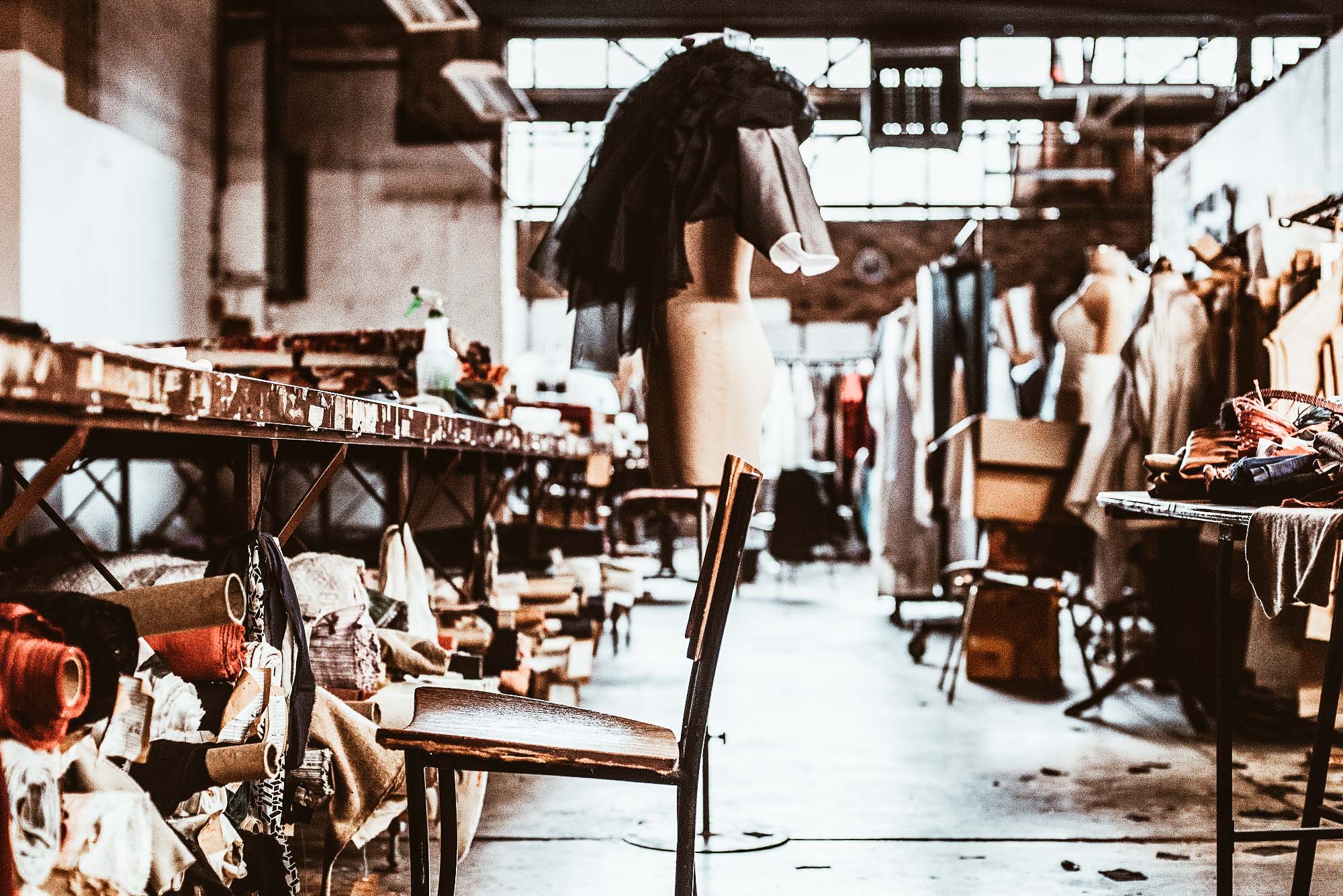
La vita in Australia
L'Australia e la sua scena della moda hanno abbracciato Akira Isogawa come uno di loro. Si sente molto vicino alla sua casa adottiva, anche grazie a un cugino materno che vive nella città di Mittagong nel Nuovo Galles del Sud.
Il governo ha lanciato un programma per i visti per le vacanze e lavoro che ha dato a Isogawa la possibilità di realizzare le sue ambizioni di studiare e lavorare nella moda.
Arrivato in Australia a metà degli anni '80 e avendo alcune difficoltà nelle prime settimane del suo soggiorno, le cose sono migliorate dopo che sono nate le rivoluzionarie feste di ballo della RAT (Recreational Arts Team). Qui Isogawa riesce a connettersi con persone che la pensano allo stesso modo e far fiorire il suo talento.
Dopo essersi iscritto a un corso di moda presso l'East Sydney Technical College, ha aperto il suo primo negozio con tutti i suoi risparmi.
"Sydney è la mia base", afferma Isogawa. “Crescendo a Kyoto, mi sono sempre sentito come se fossi altrove. Non credo di riuscire a comportarmi come un “giapponese tipico” e seguire le regole della società. Capisco come tali regole siano necessarie e aiutano il Giappone a funzionare in modo efficiente come fa oggi. Ma io amo infrangere le regole, e questo è permesso qui in Australia. È un vero sollievo".
Tuttavia, a tutti manca sempre la patria. Anche Akira Isogawa ammette un desiderio nostalgico per la tranquilla Kyoto della sua infanzia. Si riferisce infatti all'arte giapponese di "leggere l'aria", dove le cose sono comprese, ma non necessariamente dette.

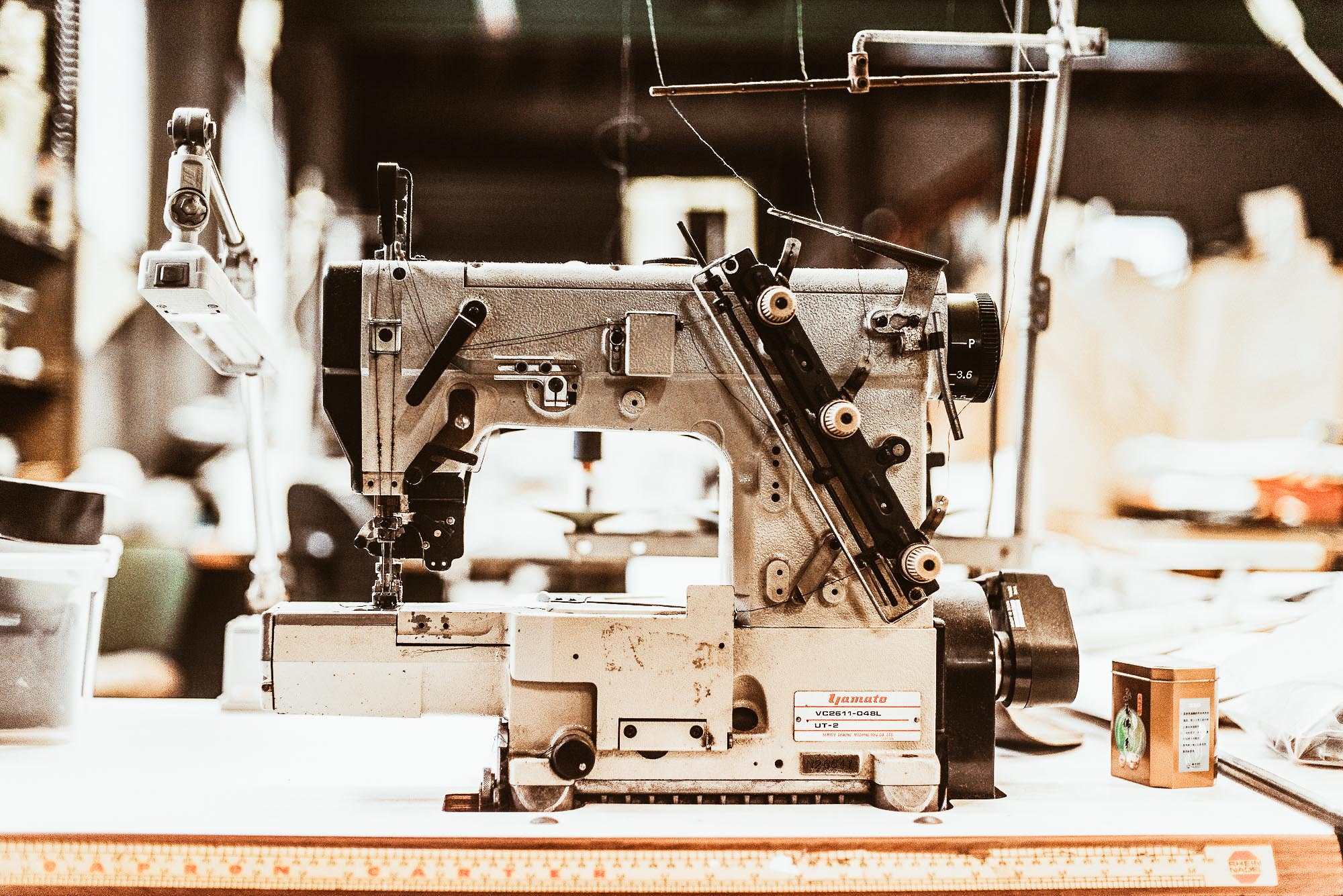
Gli anni '90
Tuttavia, è negli anni '90 che il lavoro di Isogawa e la sua etichetta Akira esplosero ed vennero conosciuti in tutto il mondo. Dopo il suo show di debutto durante la Mercedes Benz Fashion Week Australia nel 1996, questo è diventato un momento regolare per il suo lavoro, ma non solo. In effetti, queste passerelle erano solo l'inizio. Infatti, successivamente ottennte un posto alle sfilate di moda di Parigi. Qui ha catturato l'attenzione di Joan Burstein, l'acquirente di moda internazionale che ha contribuito a lanciare nomi come Alexander McQueen e John Galliano nel Regno Unito.
Un altro momento cruciale avvenne quando Naomi Campbell indossò l'abito di akira ispirato al kimono sulla copertina di Vogue Australia nel 1997.
“Quella copertina è stata una svolta nella mia carriera; non può essere minimizzato. È stato fantastico ”, ricorda Isogawa. "Sono anche molto grato ai media, a tutti quelli che mi hanno supportato. Ma allo stesso tempo, è stato così stressante. Non sono riuscito a gestire tutto e sono finito con un addetto alla reception, tra gli altri 25 dipendenti a tempo pieno".


Dopo la follia della moda
Nel 2004, ha incontrato il CEO di Australian Wool Innovation e Isogawa è diventato l'ambasciatore di lana australiana. L'istituto era alla ricerca di un designer che potesse aggiornare l'immagine della lana, quindi nel 2005 Akira Isogawa ha creato un nuovo tipo di tessuto. Una garza di lana fine e leggera ispirata alla georgette di seta.
“Volevo che il tessuto fosse leggero. Volevo che la lana venisse reinterpretata come trans-stagionale ", afferma. “La garza di lana è piuttosto fragile, meravigliosamente morbida e 100% merino australiano. Ce l'ho ancora in magazzino. "
Akira Isogawa oggi
Ora che la vita è un po' più tranquilla, Isogawa è libero di esplorare nuove visioni e diversi sbocchi per il suo lavoro. Infatti, possiamo vederlo collaborare a progetti artistici, come la progettazione di costumi per la Sydney Dance Company.
Il marchio di abbigliamento femminile Akira è famoso per mescolare elementi orientali e occidentali in termini di tessuti, tecniche e design. La libertà concessa al lavoro e alla vita di Akira come immigrato australiano lo ha aiutato a sviluppare il suo stile personale.
Credendo fermamente nella moda lenta e sostenibile, i capi di Akira Isogawa trascendono il tempo, dimenticano le tendenze e devono essere indossati ancora e ancora.
Fonte: japantimes.co.jp
Foto: japantimes.co.jp
2019 Kanji of the year: 令
Il 2020 è finalmente arrivato e, come ogni anno, il Giappone ha eletto il "Kanji dell'anno" e per il 2019 la scelta è stata molto logica.
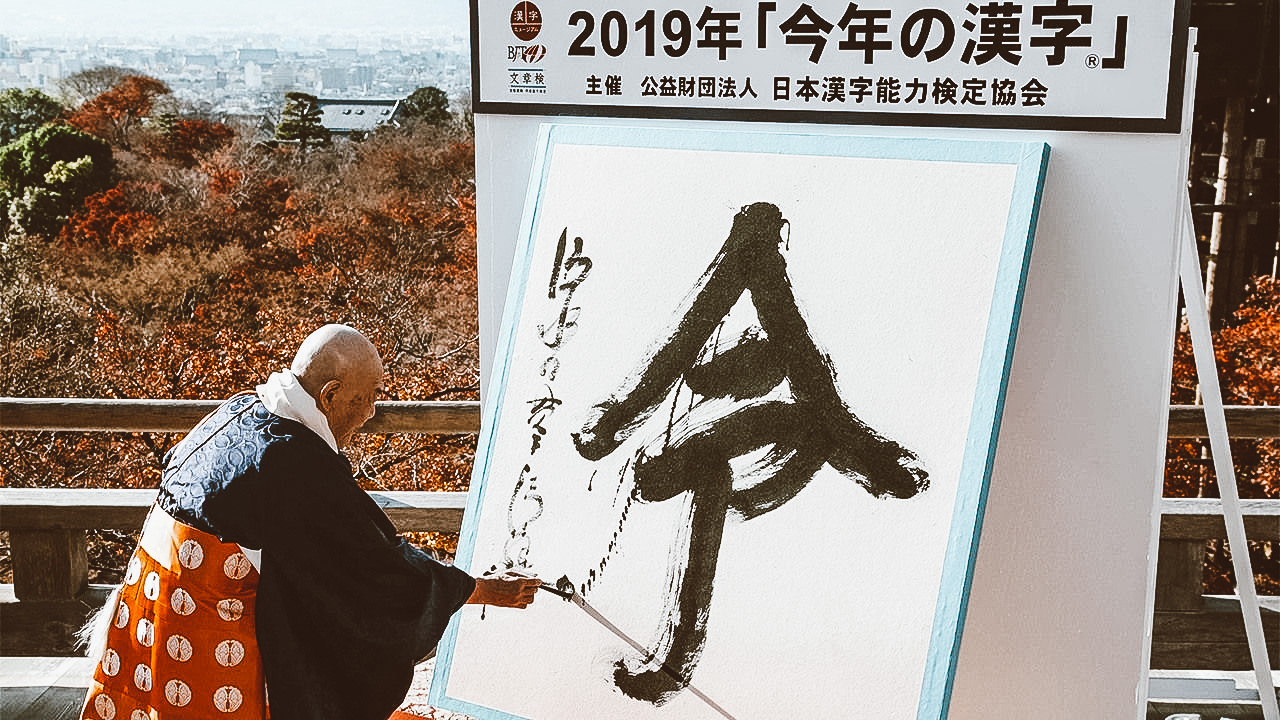
Dicembre e gennaio ci costringono sempre a fare alcune retrospettive sull'anno appena trascorso e la scelta per Kanji dell'anno non è meno degna.
Amministrato dalla giapponese Kanji Aptitude Testing Foundation, con sede a Kyoto, un singolo personaggio giapponese viene scelto a scrutinio aperto. La scelta finale ha lo scopo di incarnare un profondo significato per l'anno in chiusura.
Questa tradizione annuale viene annunciata da Seihan Mori, l'abate capo dello storico tempio Kiyomizudera di Kyoto. Questo non è un annuncio normale, infatti, l'abate capo scrive il kanji con un gigantesco pennello calligrafico mentre si trova sul balcone del tempio.
Questa volta sono stati espressi 216.325 voti e il vincitore kanji dell'anno è 令 pronunciato rei.

Rei significa "ordine" (nel senso di controllo ordinato), tuttavia, in alcuni contesti può anche significare "bello". Questo kanji è diventato famoso nel 2019 non solo come scelta del vincitore, ma anche quando è stata annunciata Reiwa, la nuova era imperiale del Giappone. Il governo giapponese ha chiarito che il significato di questa nuova era è "bella armonia"
Re / rei ha ricevuto 30.427, circa il 14% dei voti totali. Considerando che la lingua giapponese ha più di 2100 kanji ad uso regolare, questo è ancora un risultato molto importante per ogni singolo personaggio. Il secondo posto è stato occupato da 新 / shin, che significa “nuovo”, e il terzo posto 和 / wa, che significa “armonia” ed è il secondo kanji di Reiwa.
Il 2019 è stato un anno molto importante per il Giappone poiché ha segnato il cambiamento nell'era imperiale dal 1989. La selezione di 令 / rei non è una sorpresa. Tuttavia, riflette una mentalità più felice rispetto ai Kanji dell'anno nel 2018 ("disastro"), 2017 ("nord", in riferimento al lancio di missili nordcoreani) e 2014 ("imposta", il risultato di un impopolare aumento dell'imposta sulle vendite quell'anno).
Speriamo che 令 和 / rei non sia solo un promemoria dei cambiamenti significativi del 2019, ma anche un raggio di speranza che cose più belle stanno arrivando nel 2020.
E con questo, vogliamo augurare un felice anno nuovo a tutti i nostri lettori, alle vostre famiglie e persone care.
Sources: ©SoraNews24
Images ©SoraNews24, japon-secreto.com








